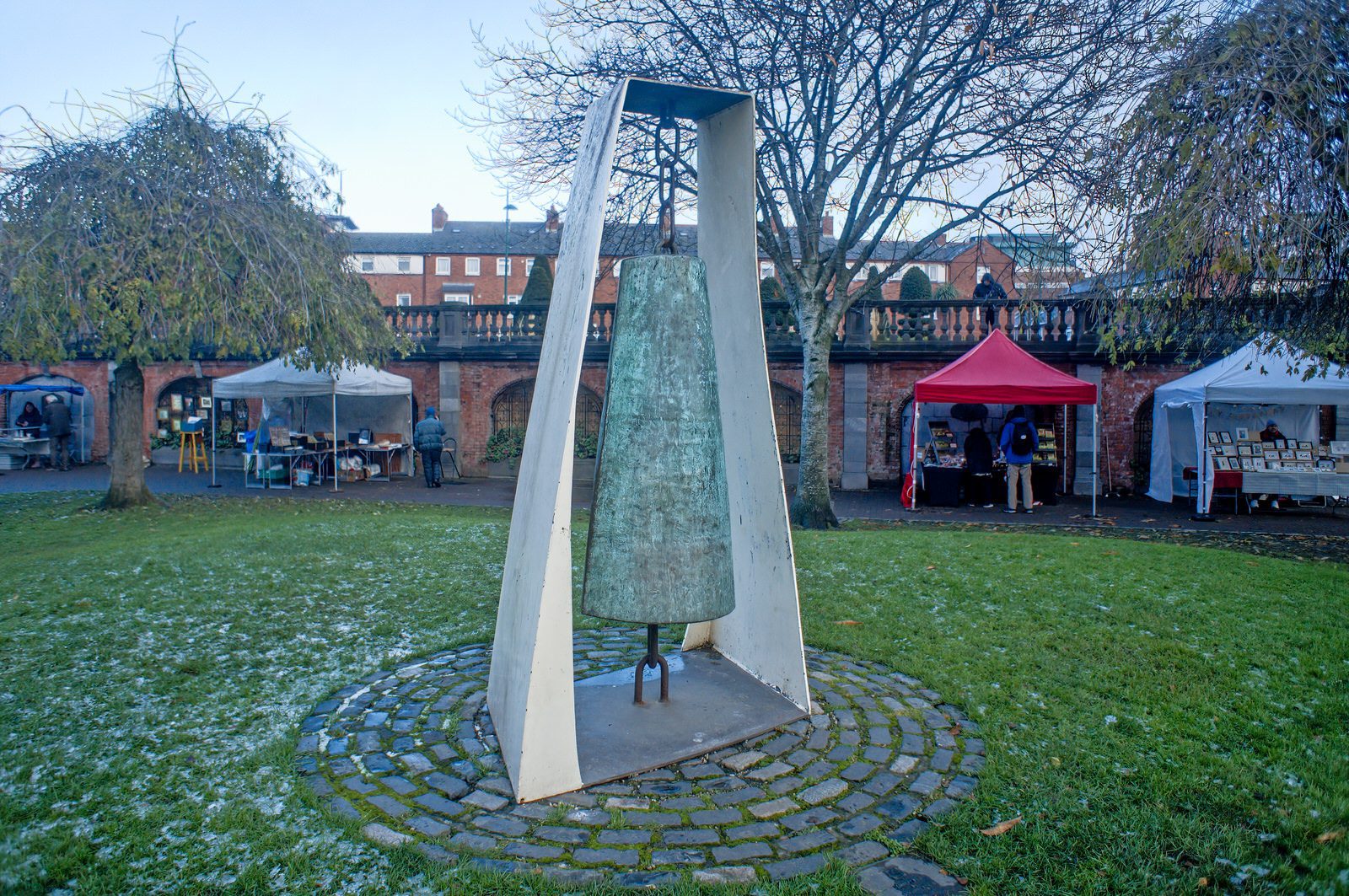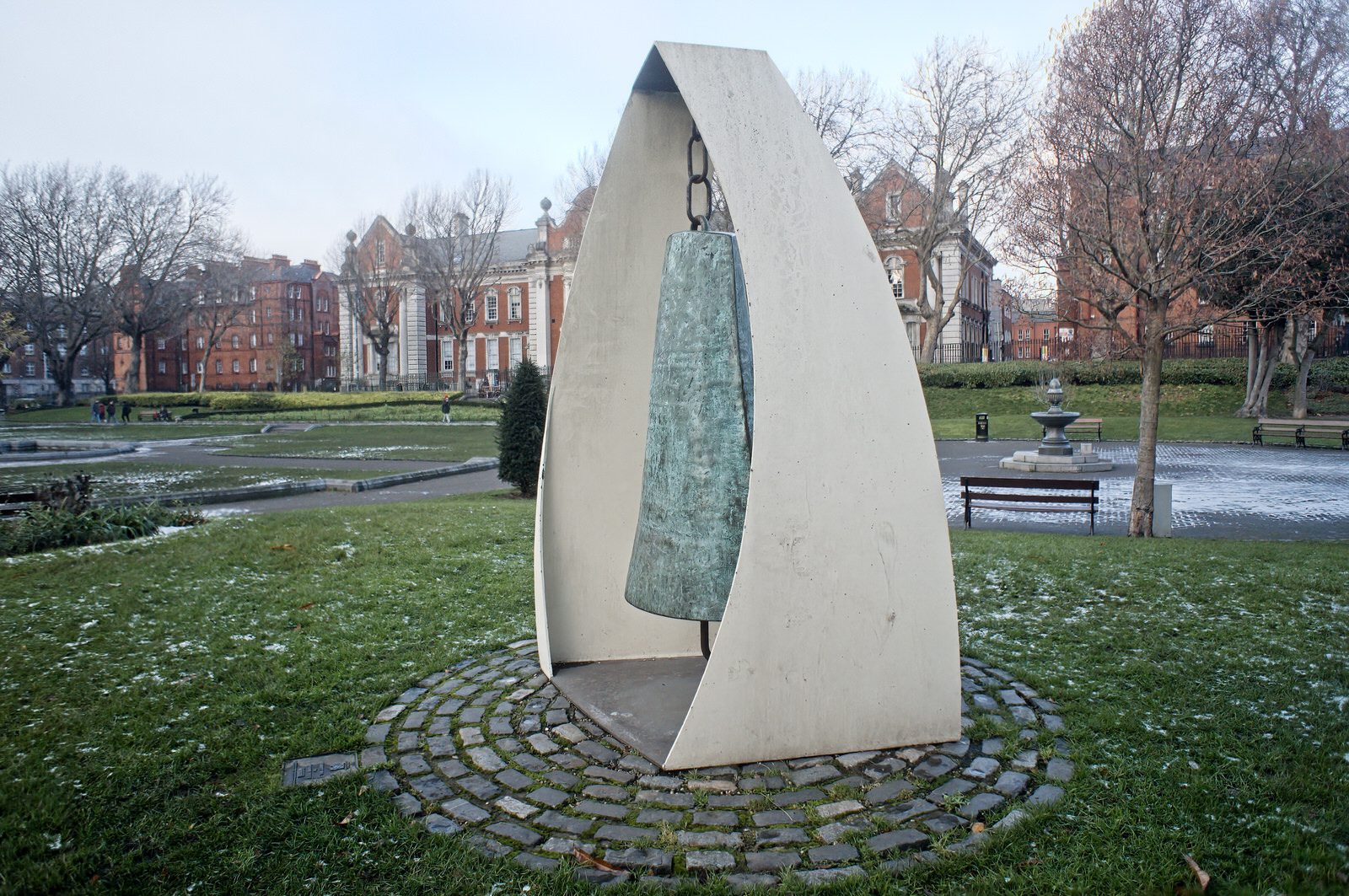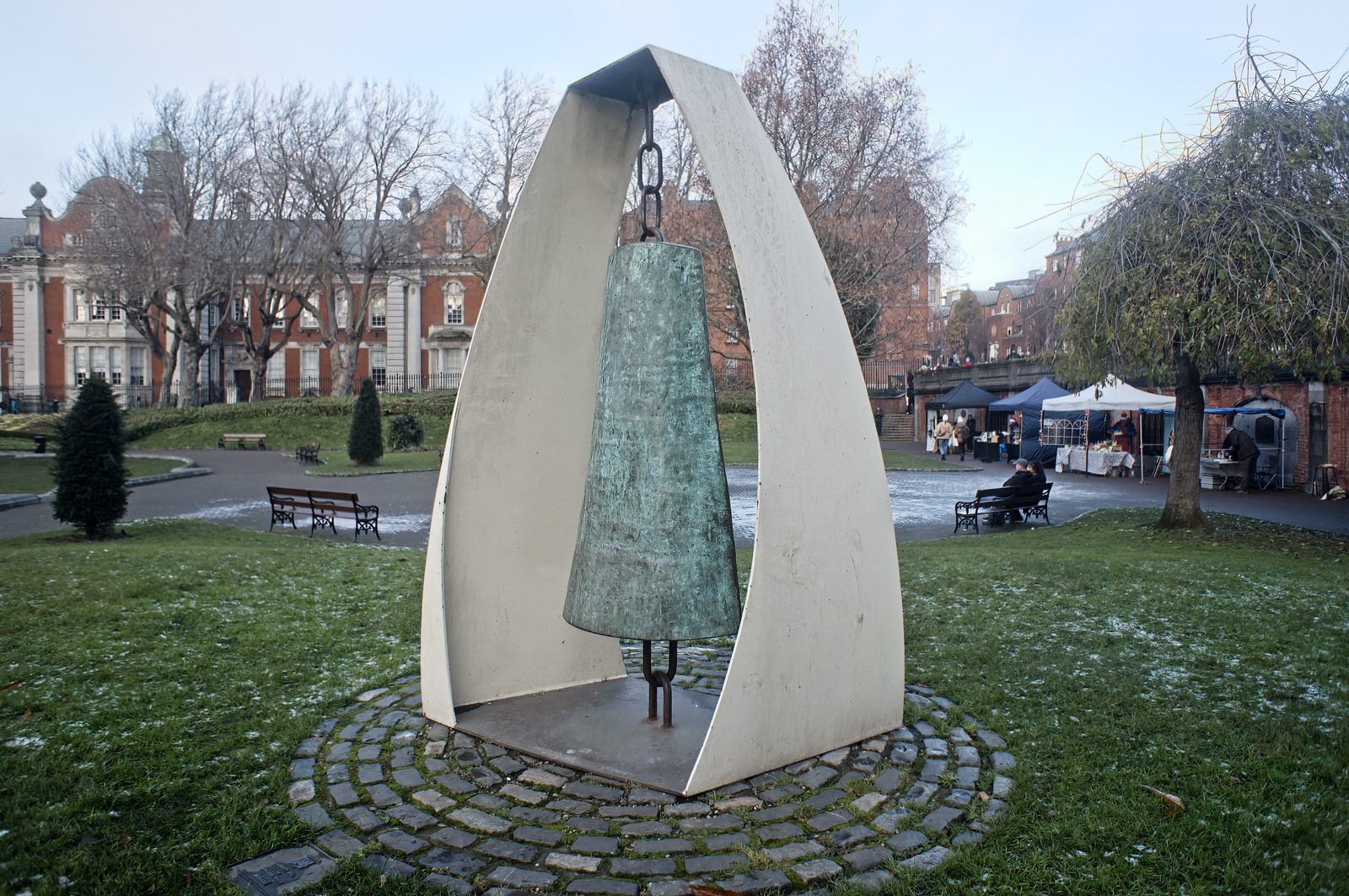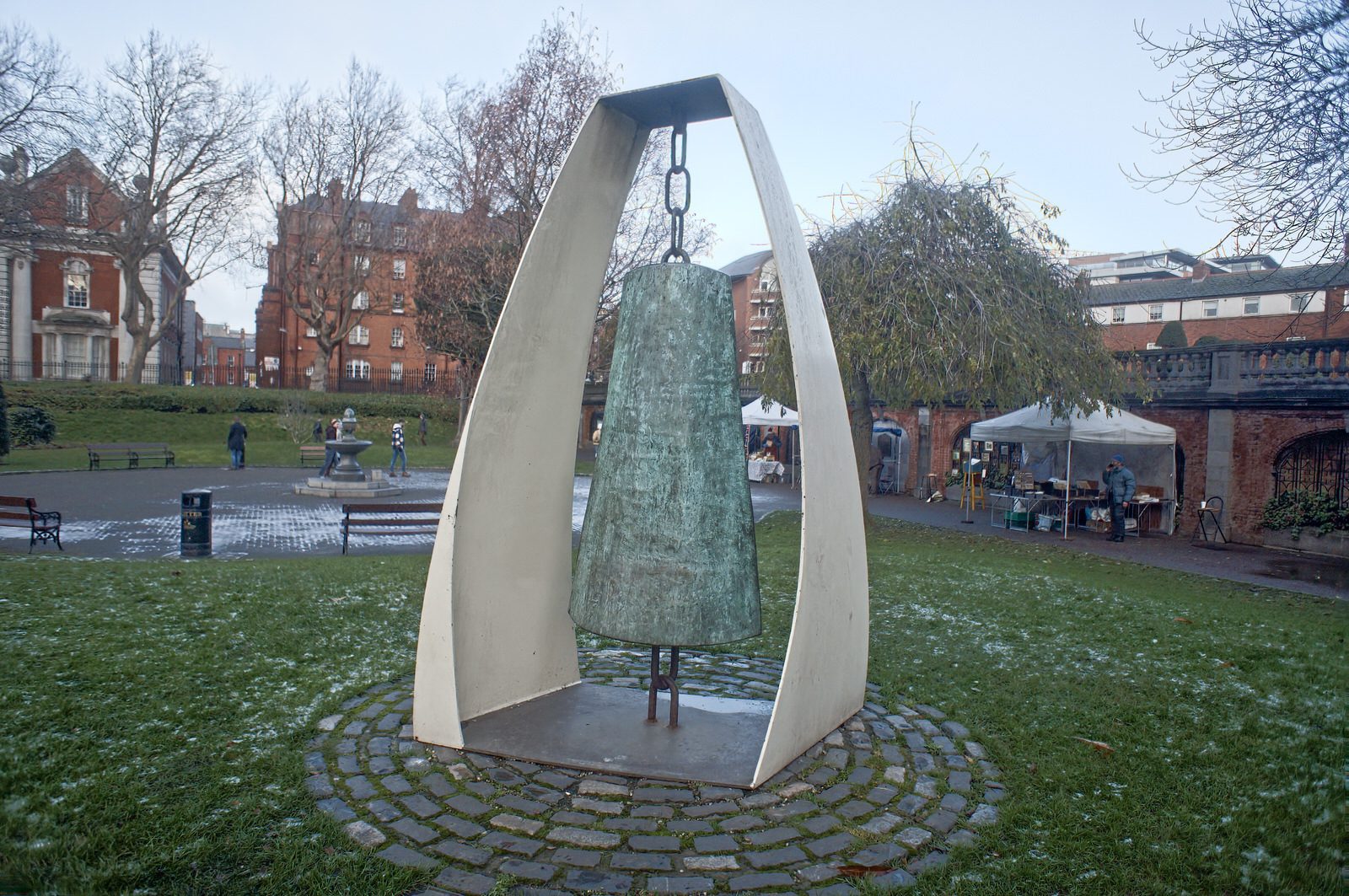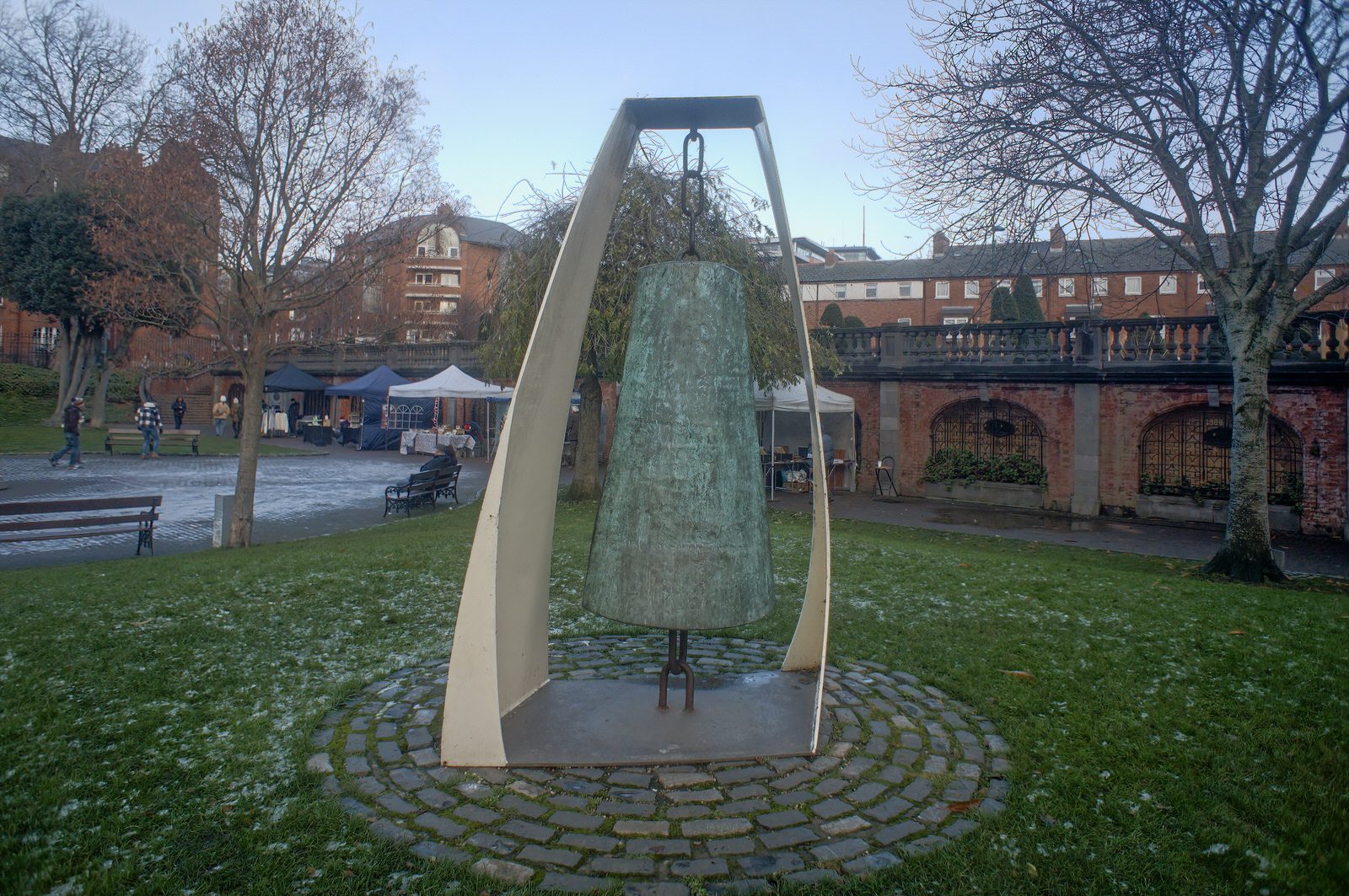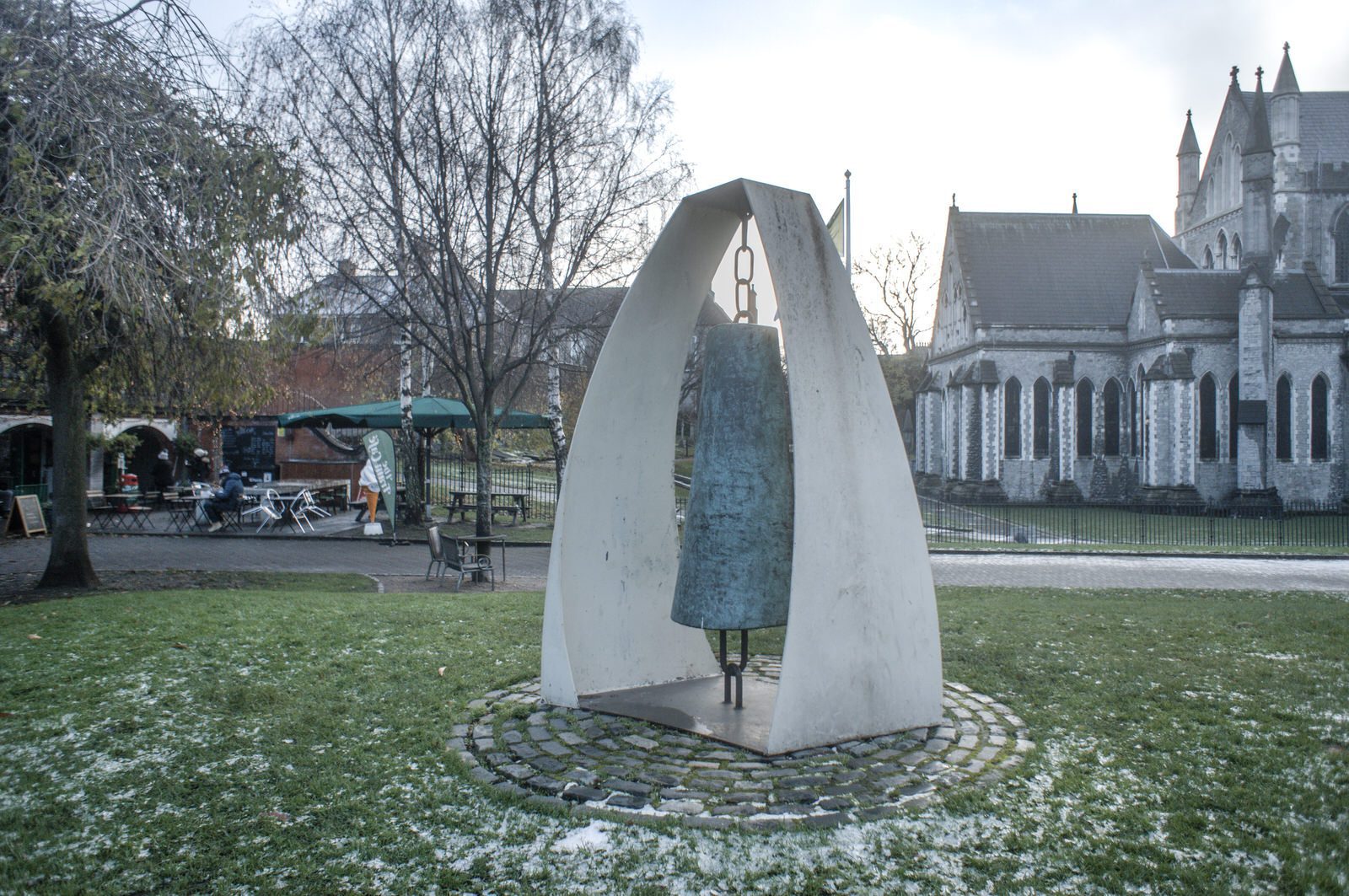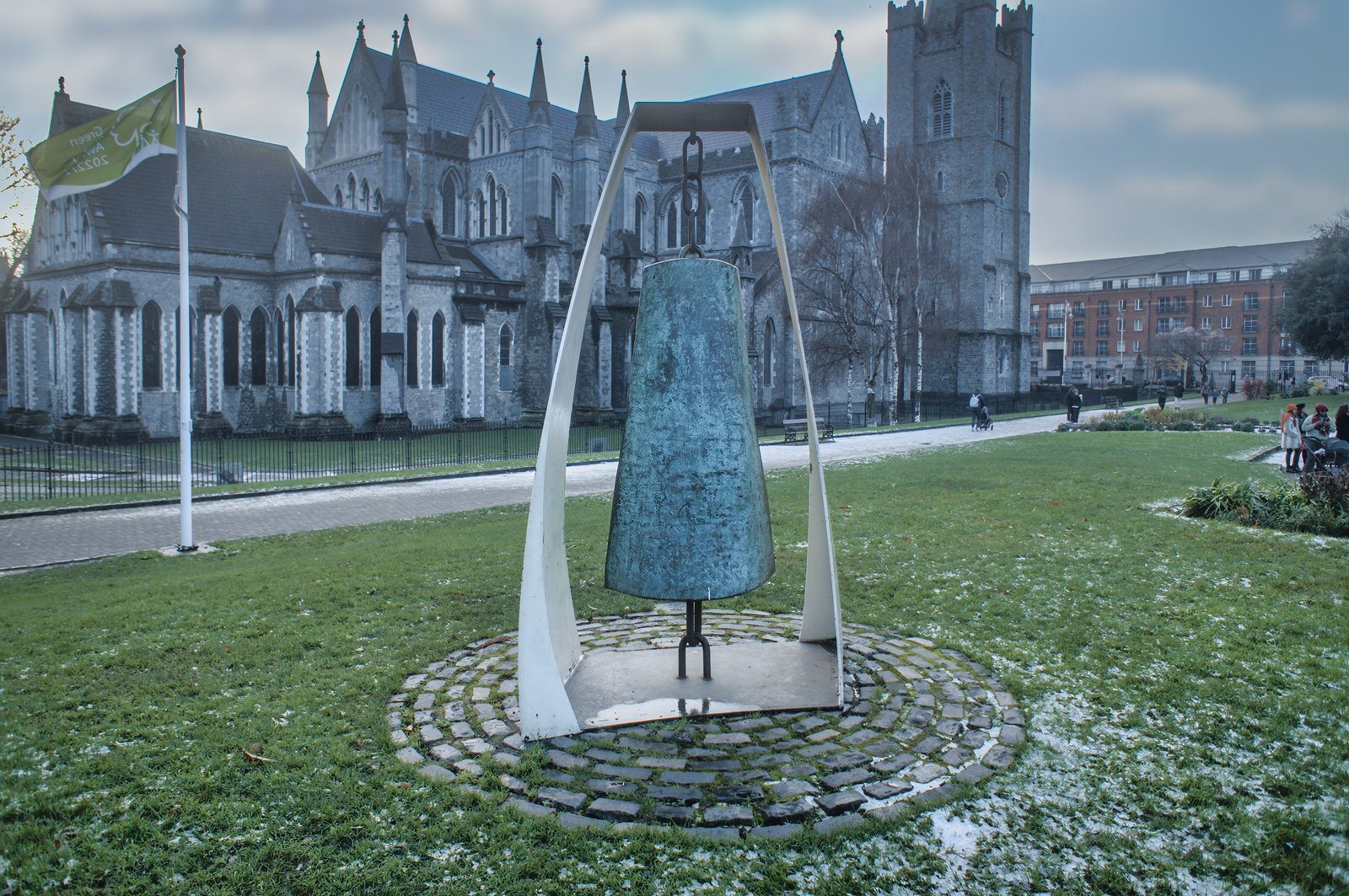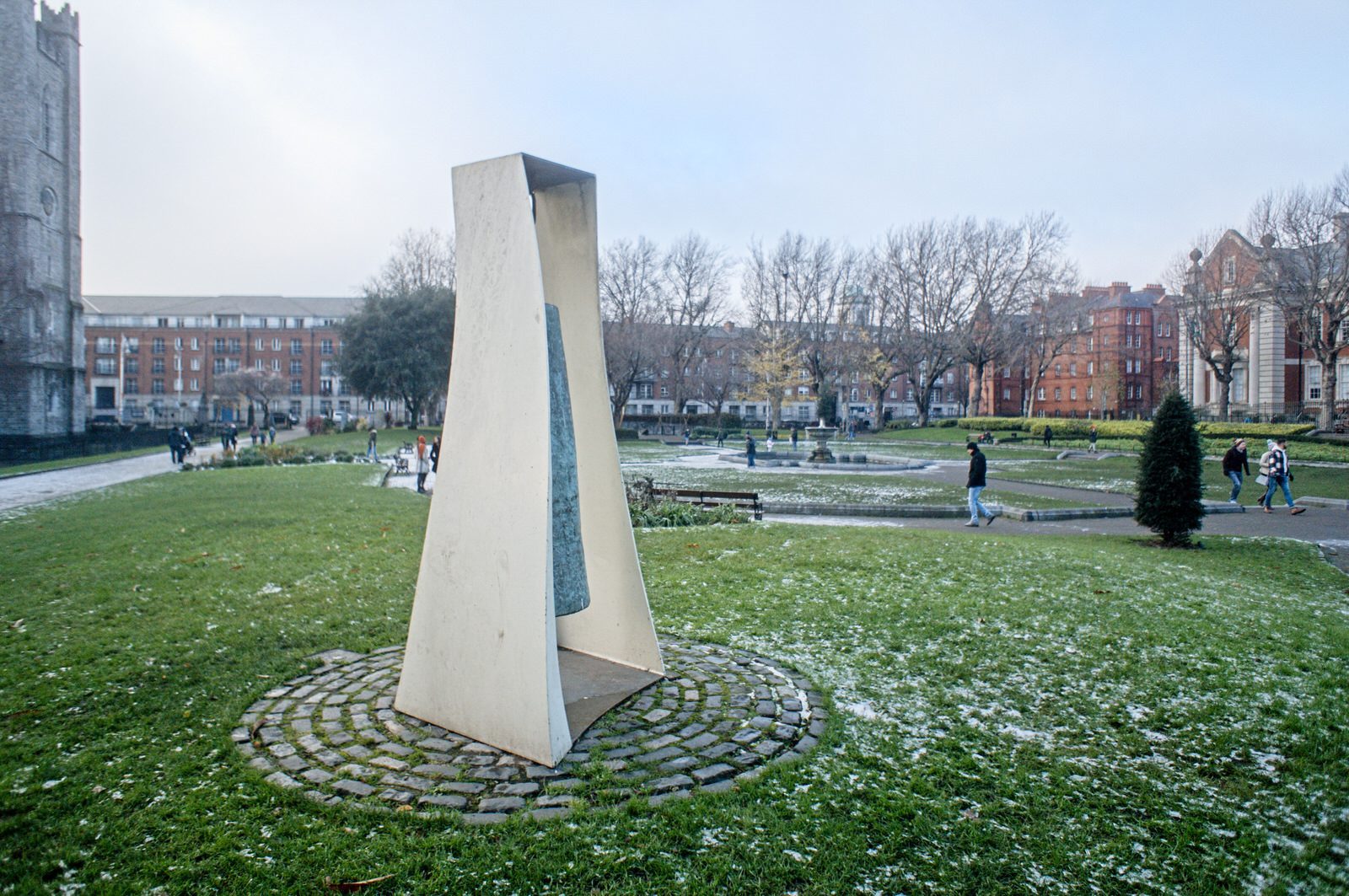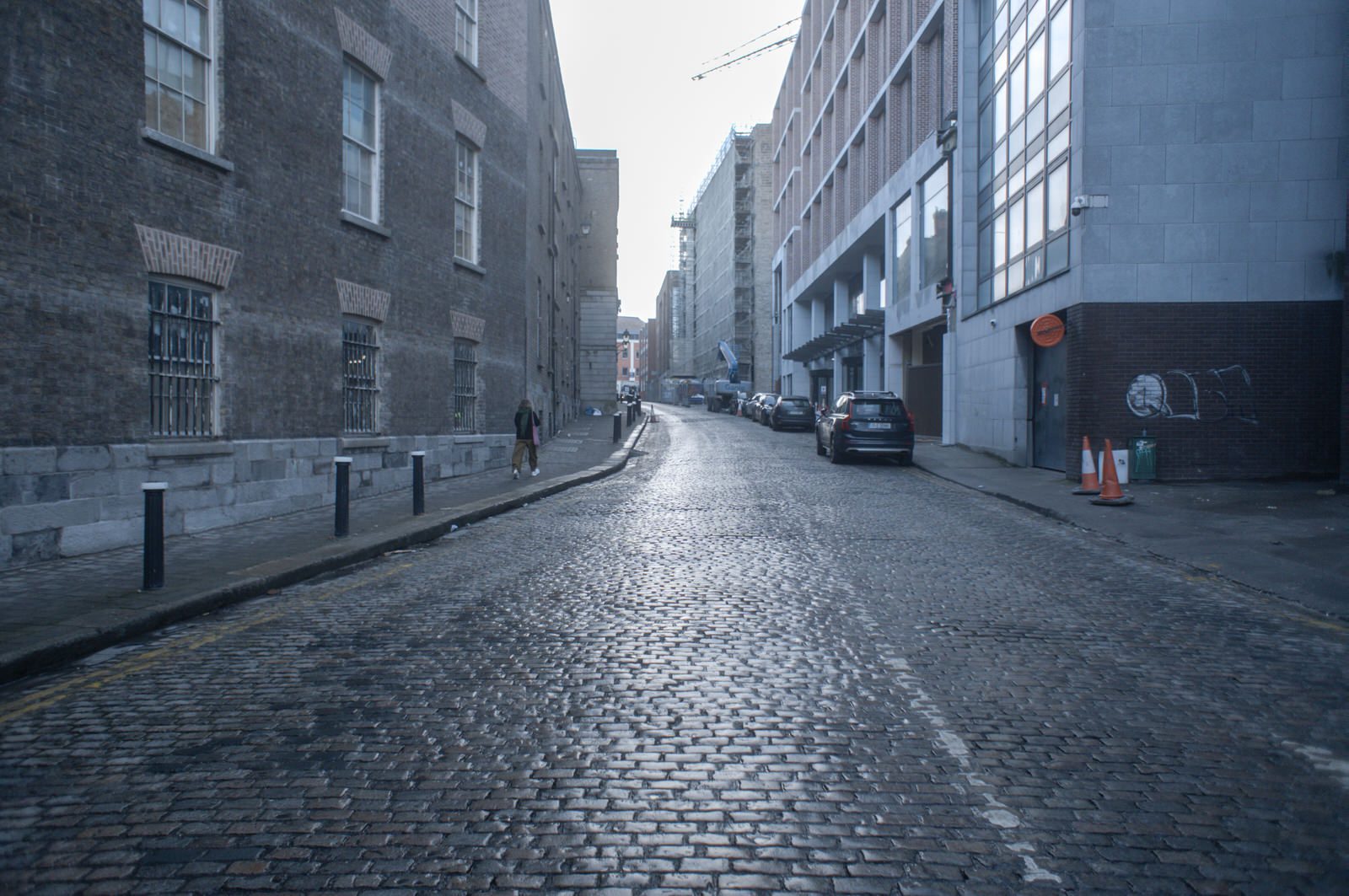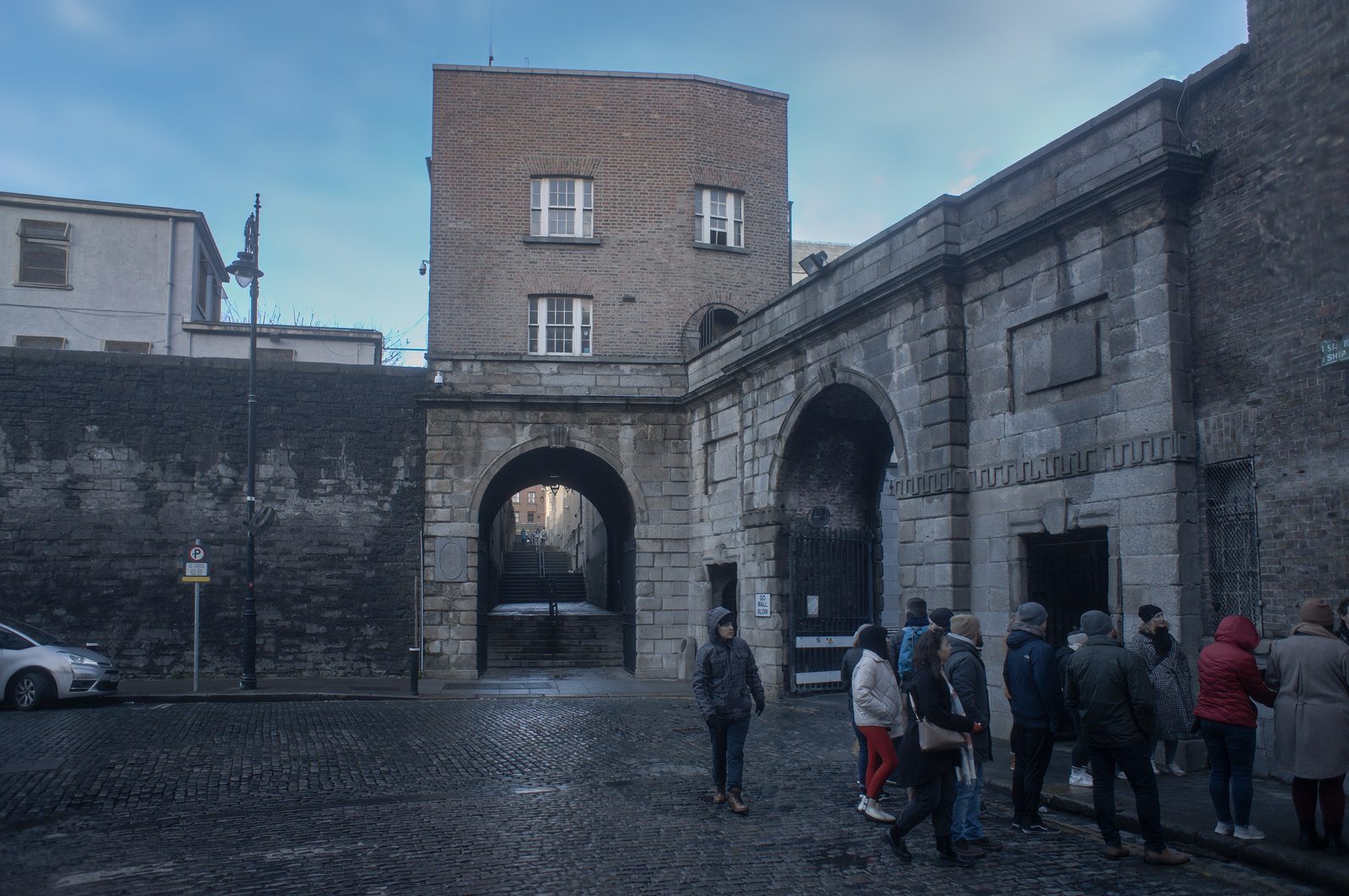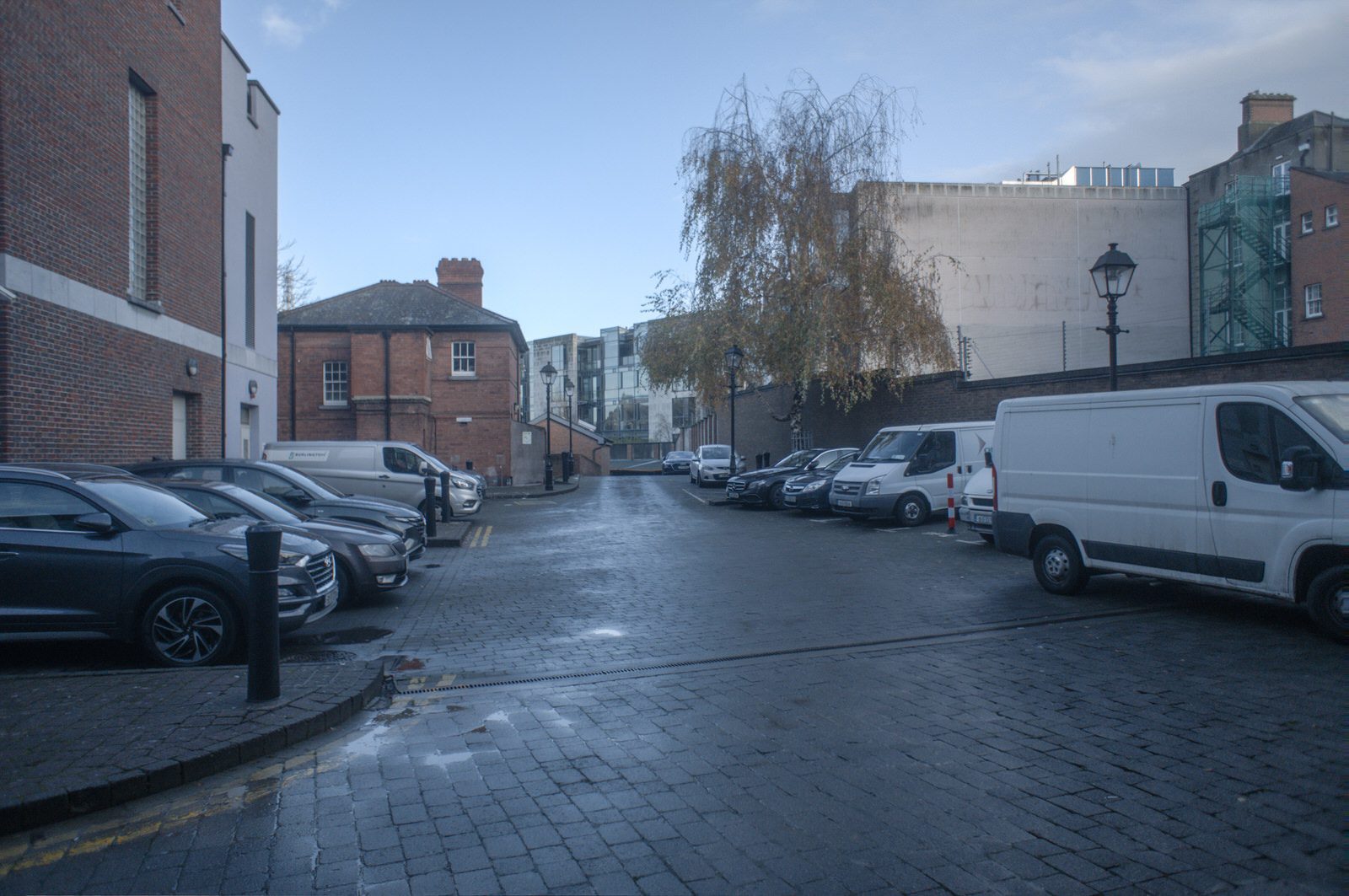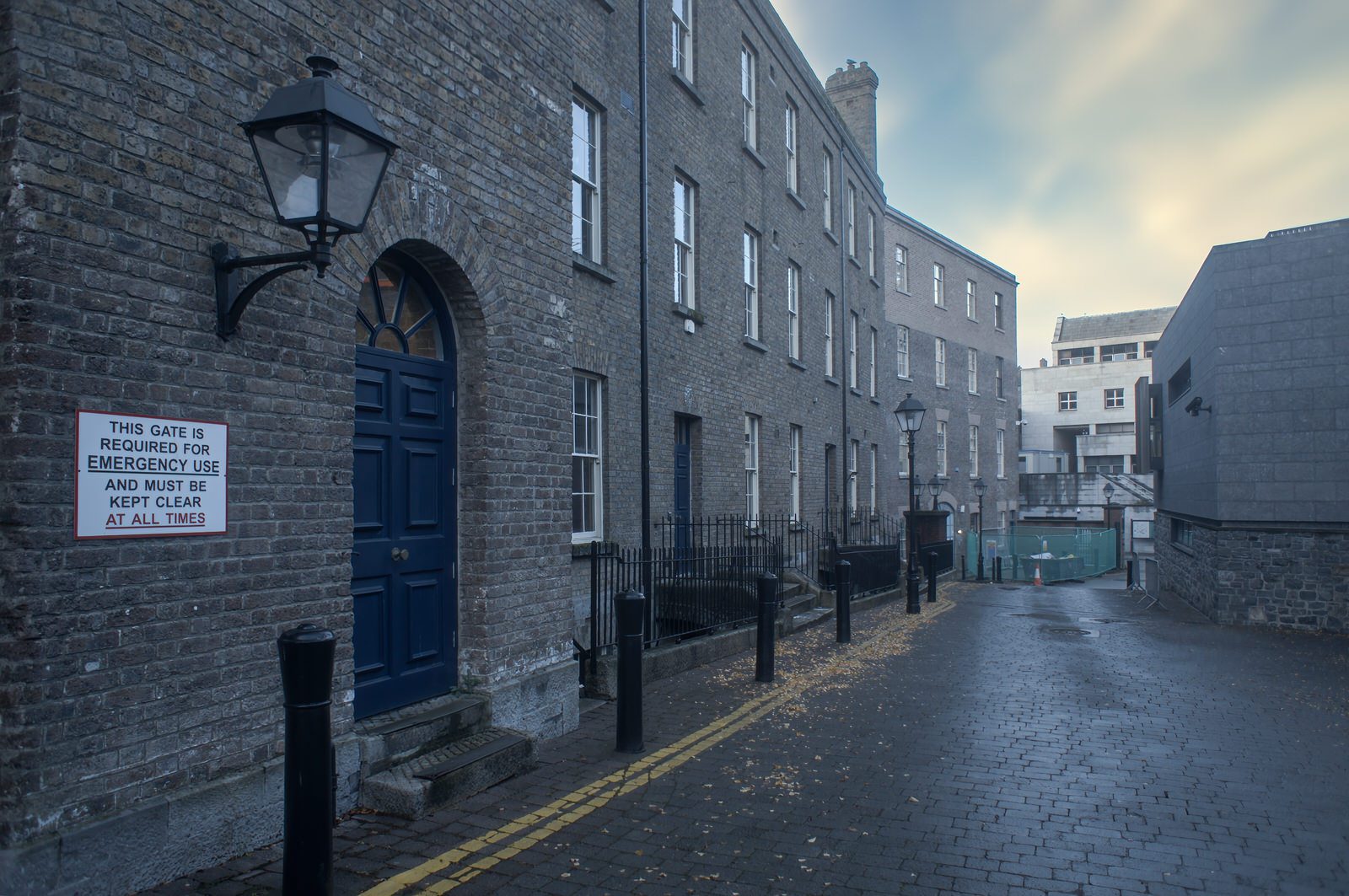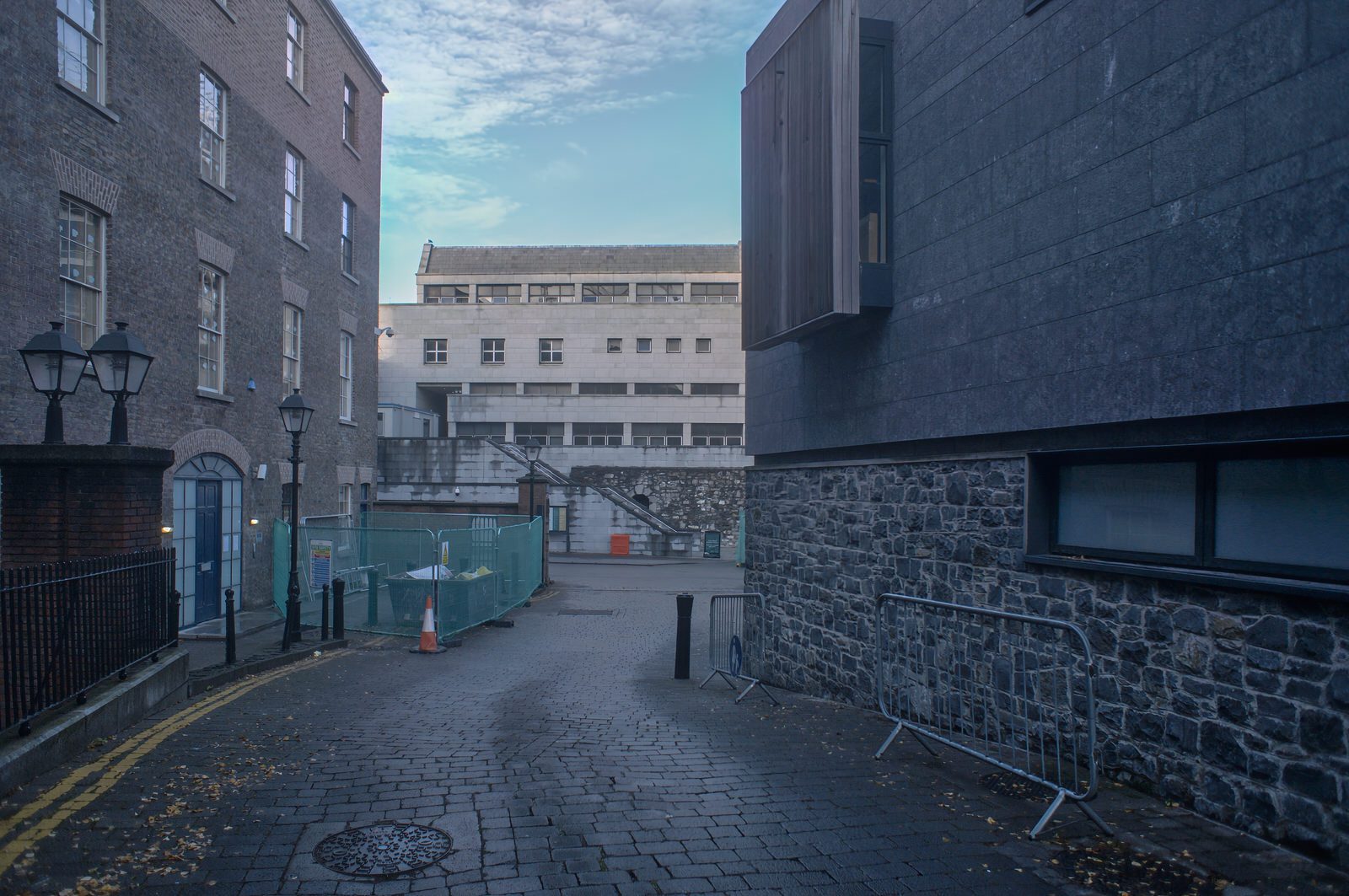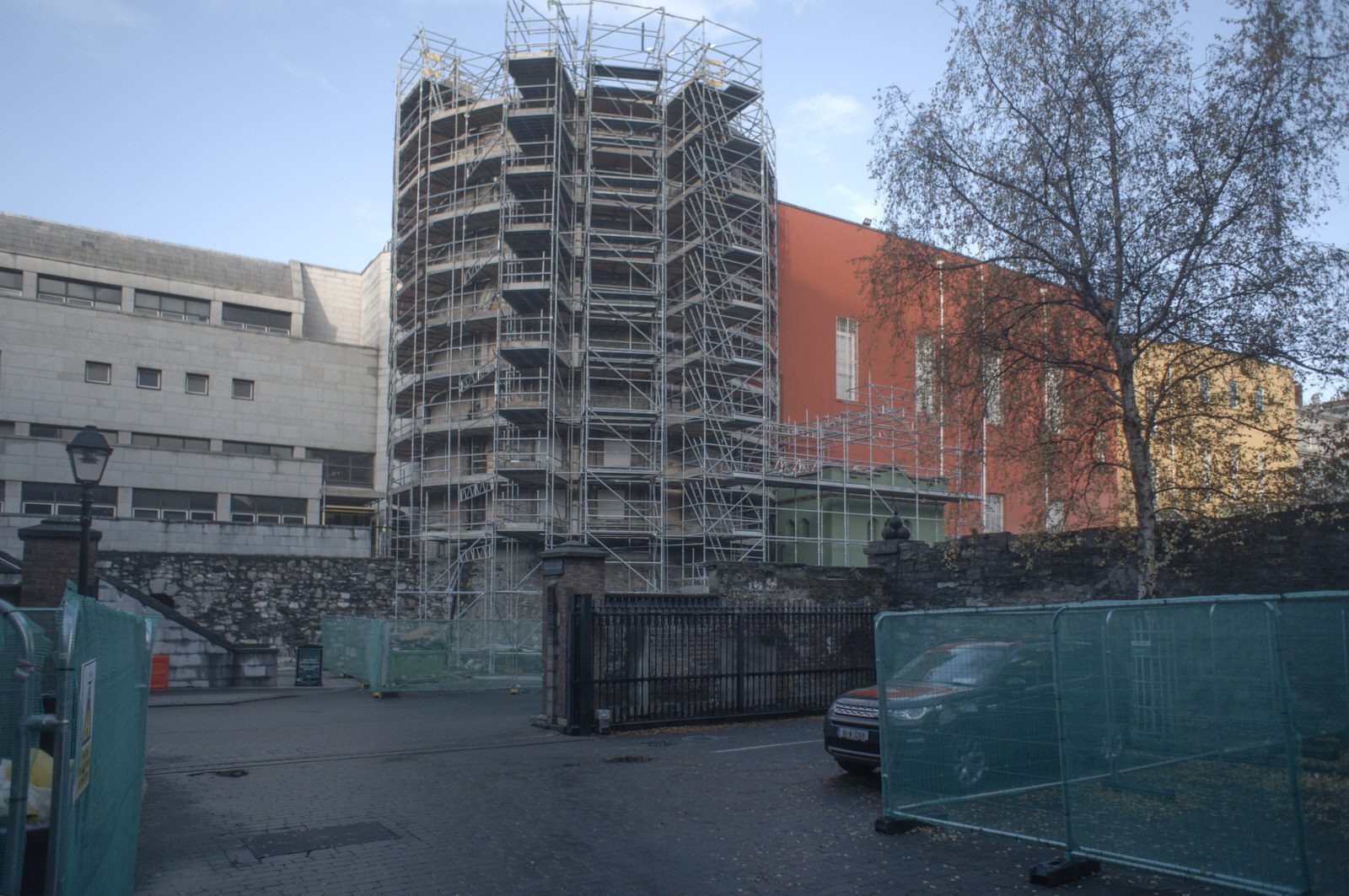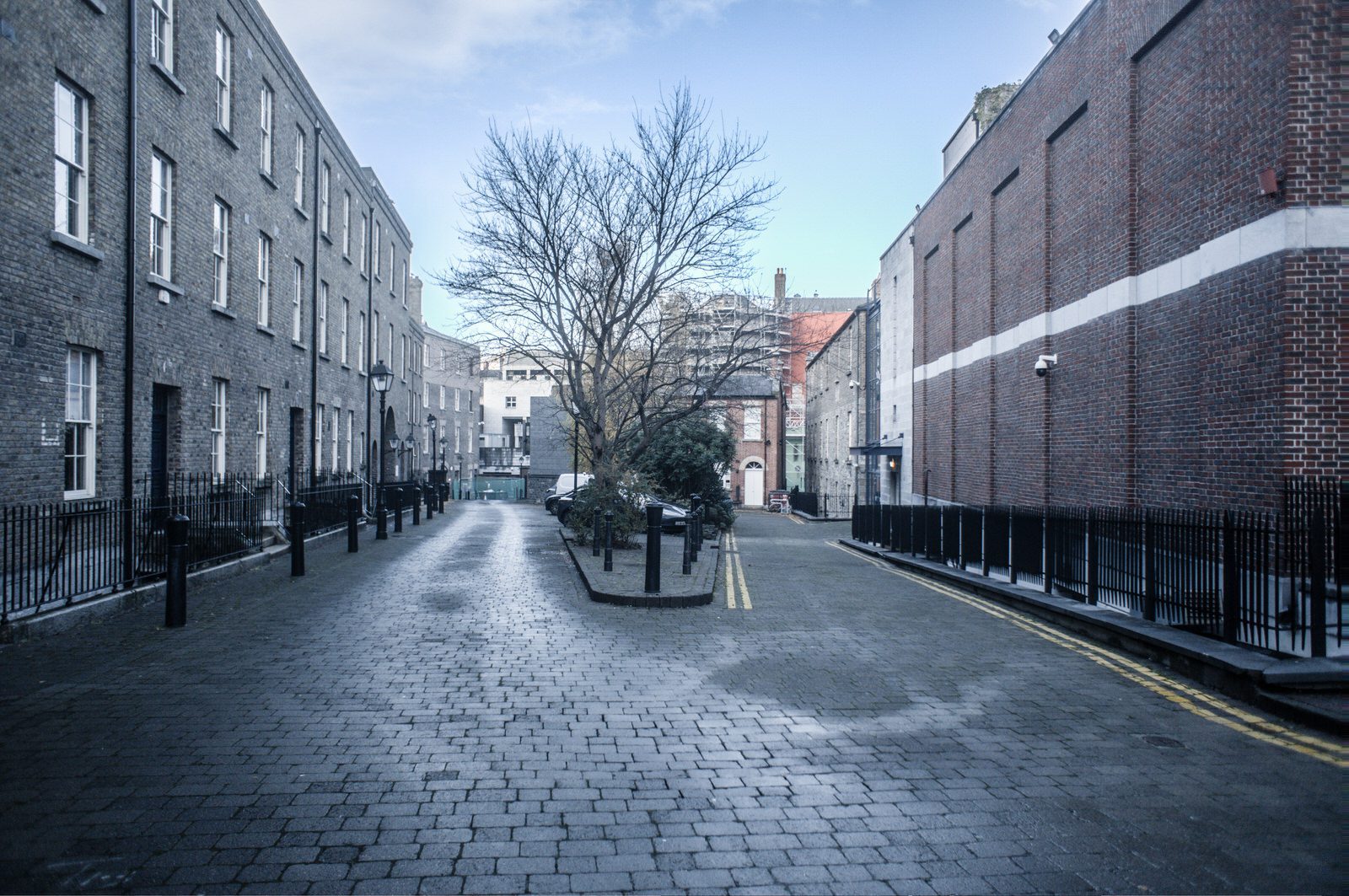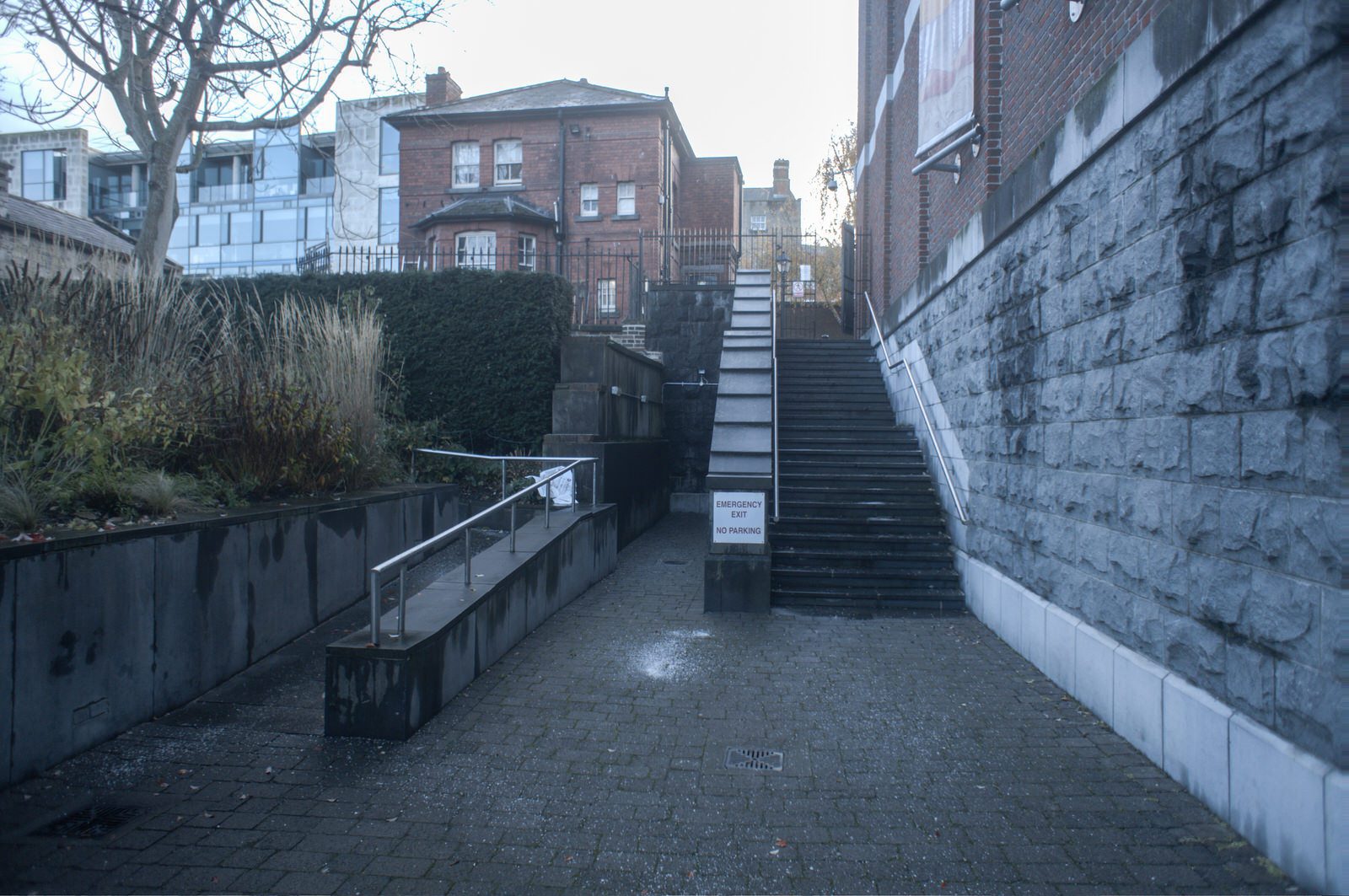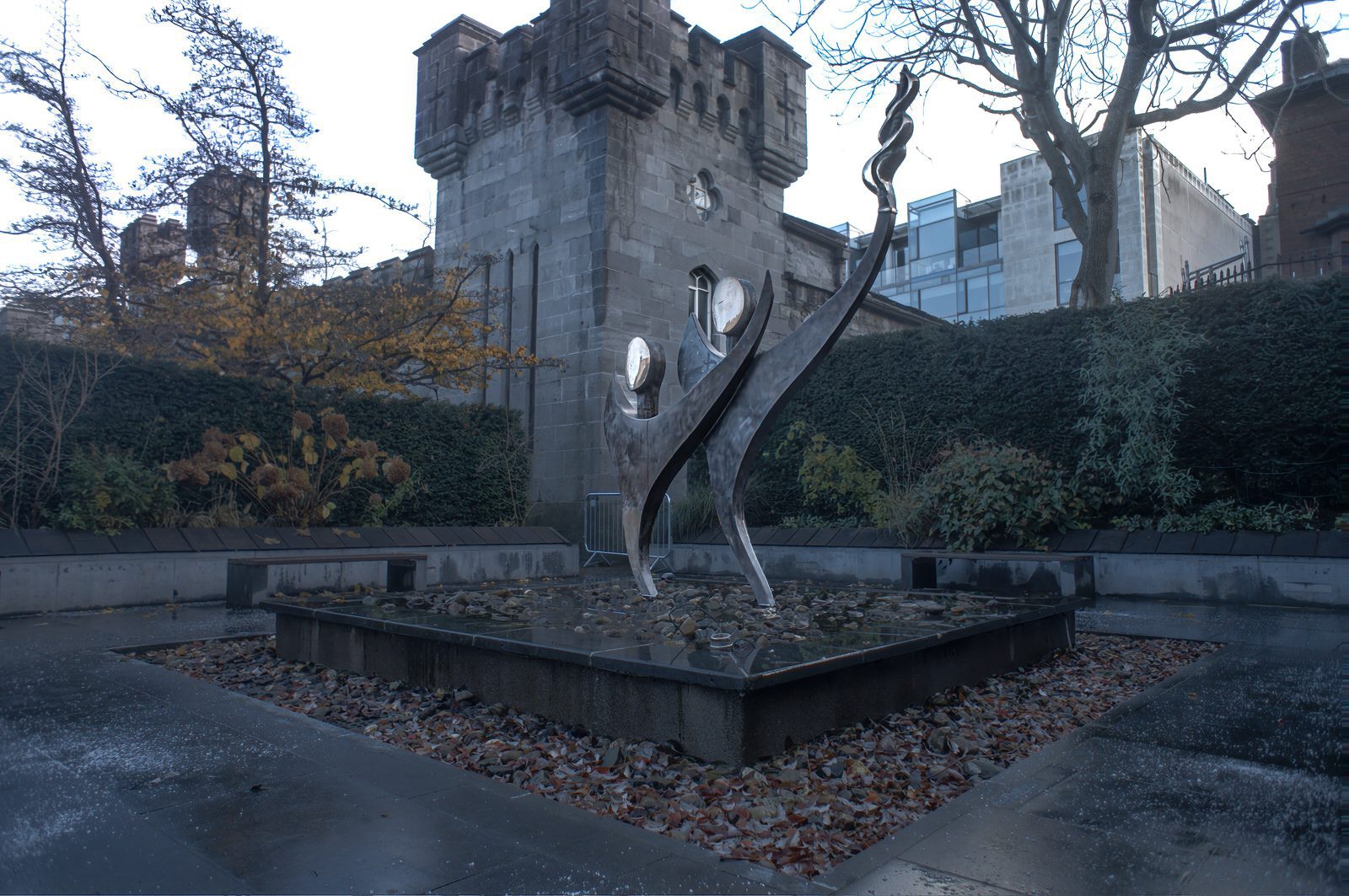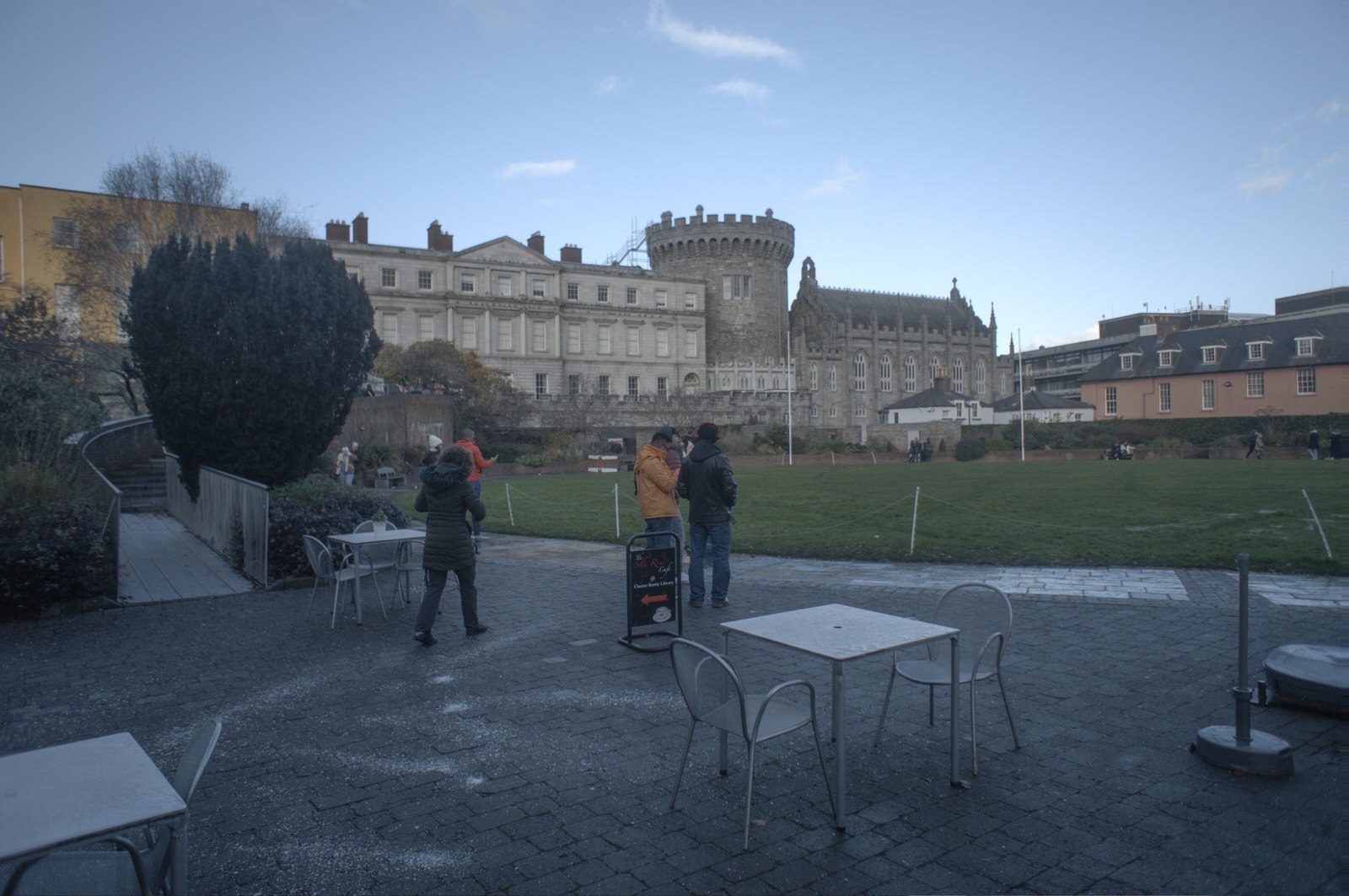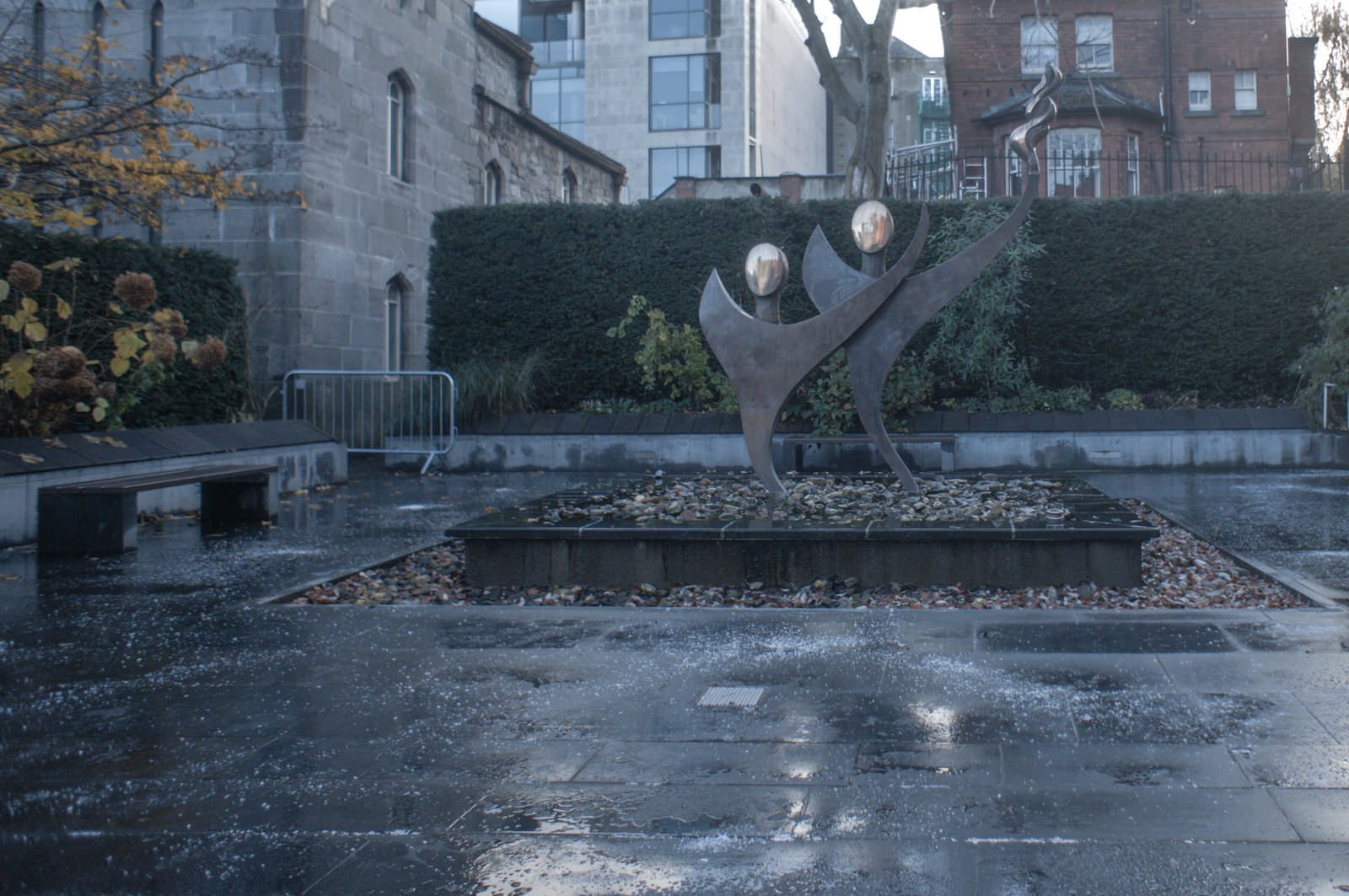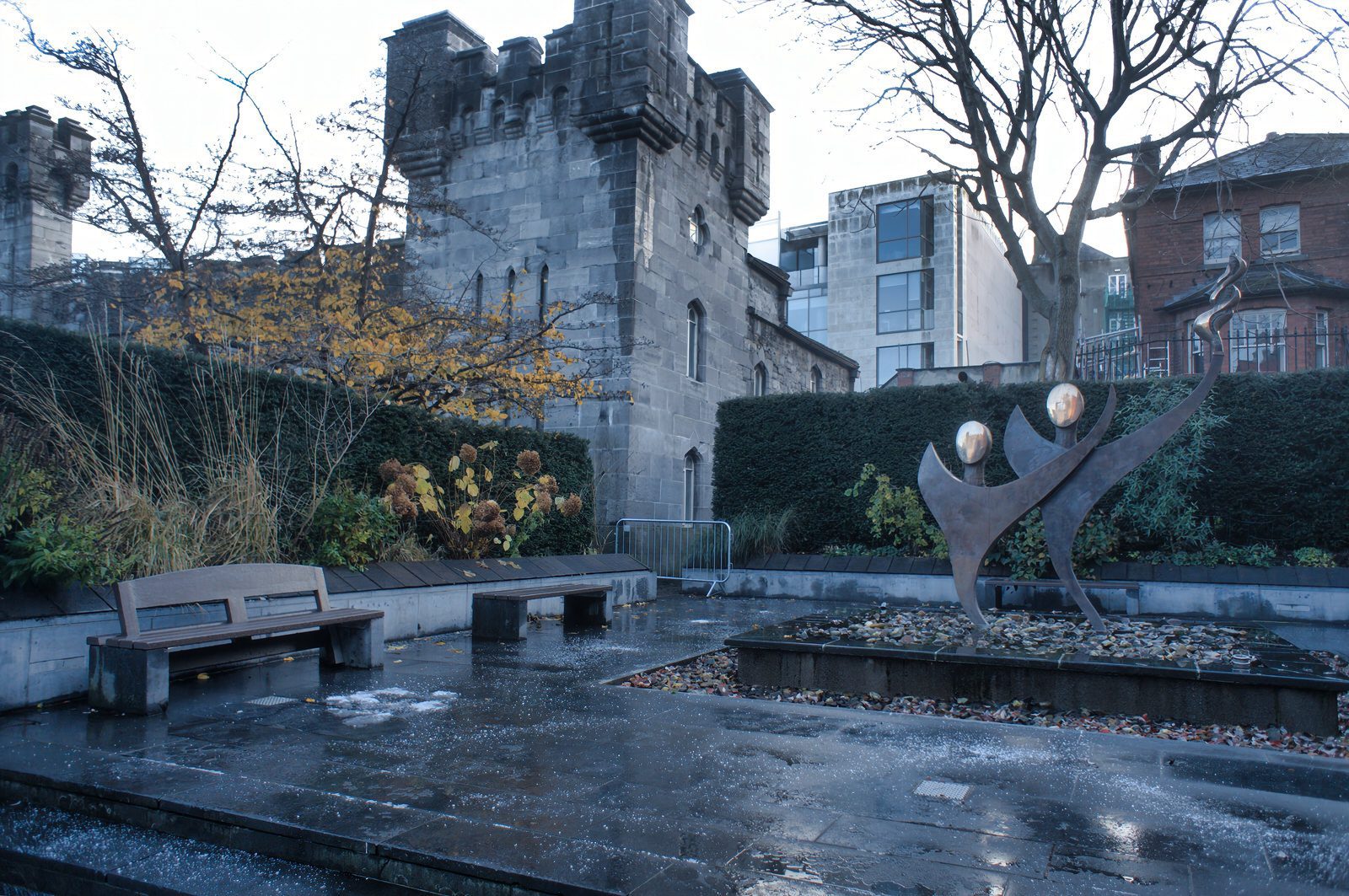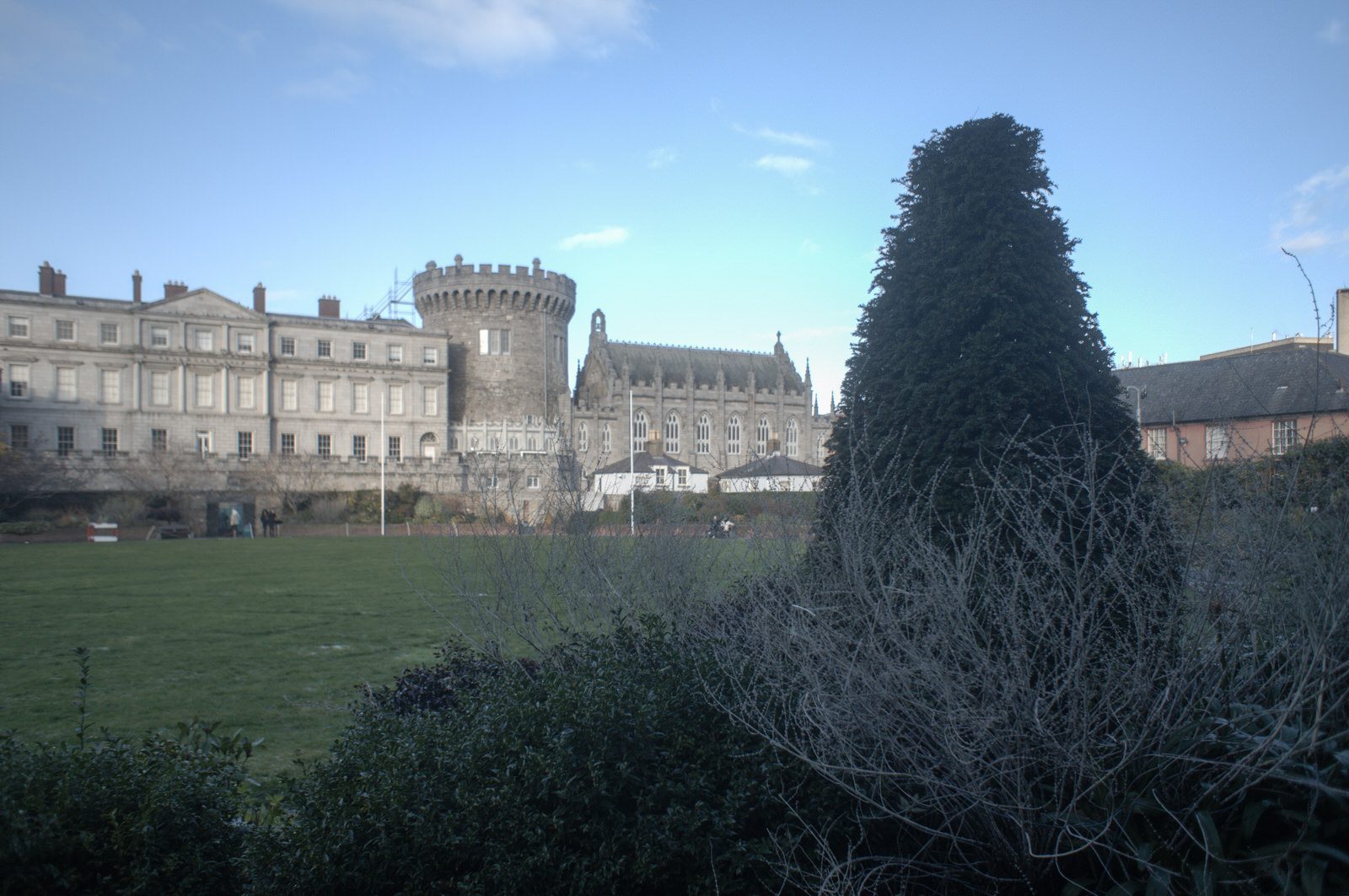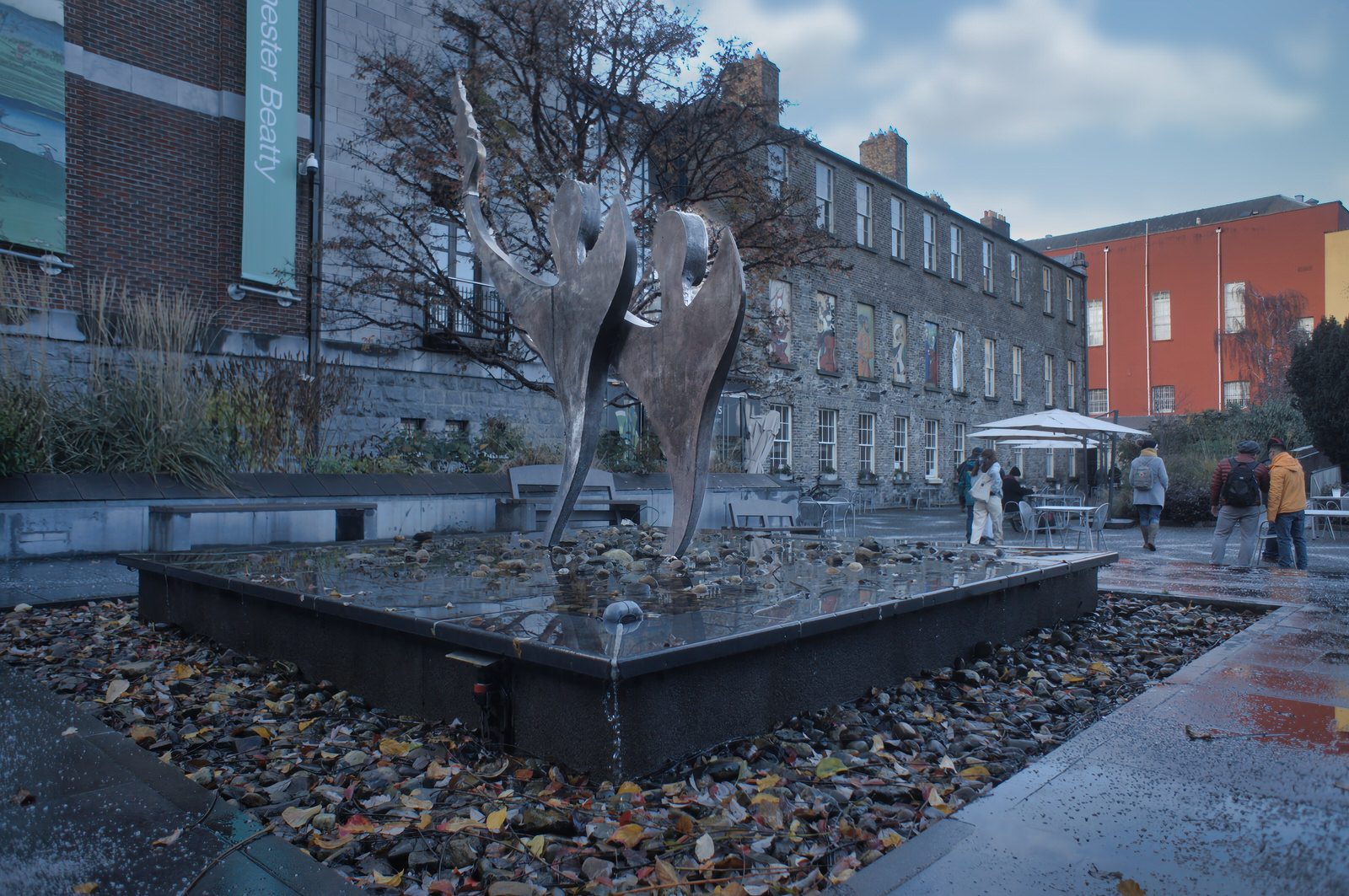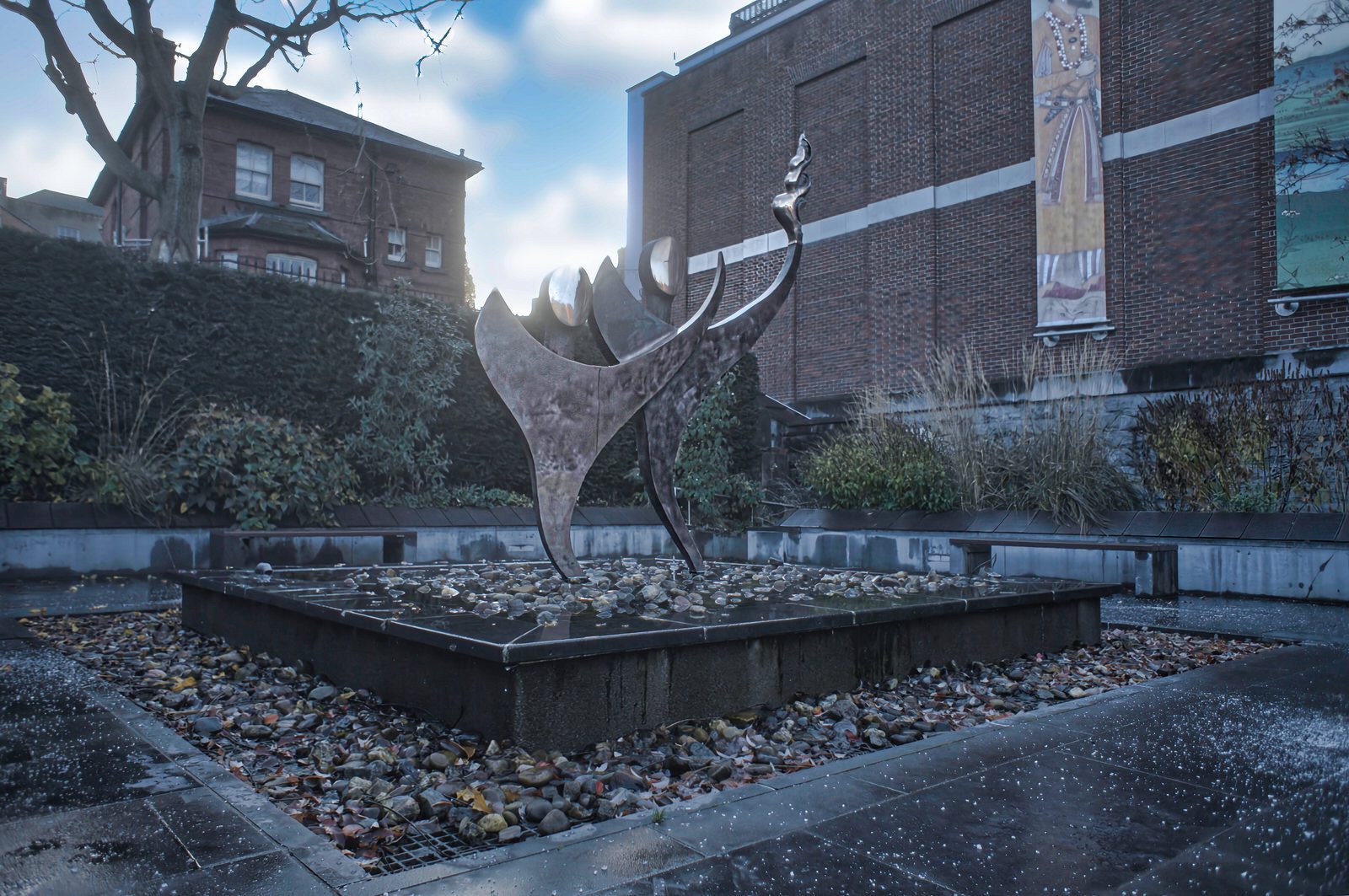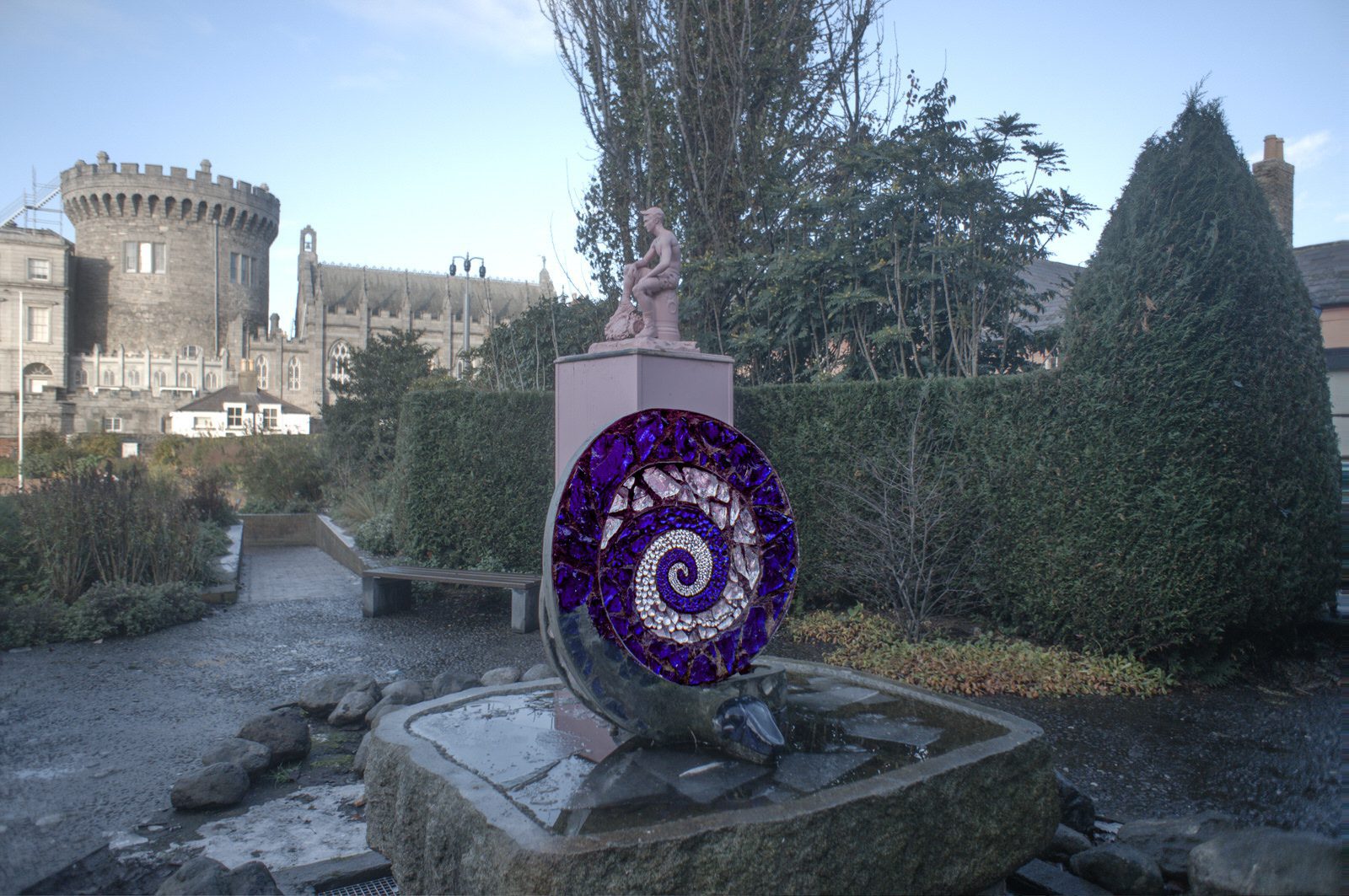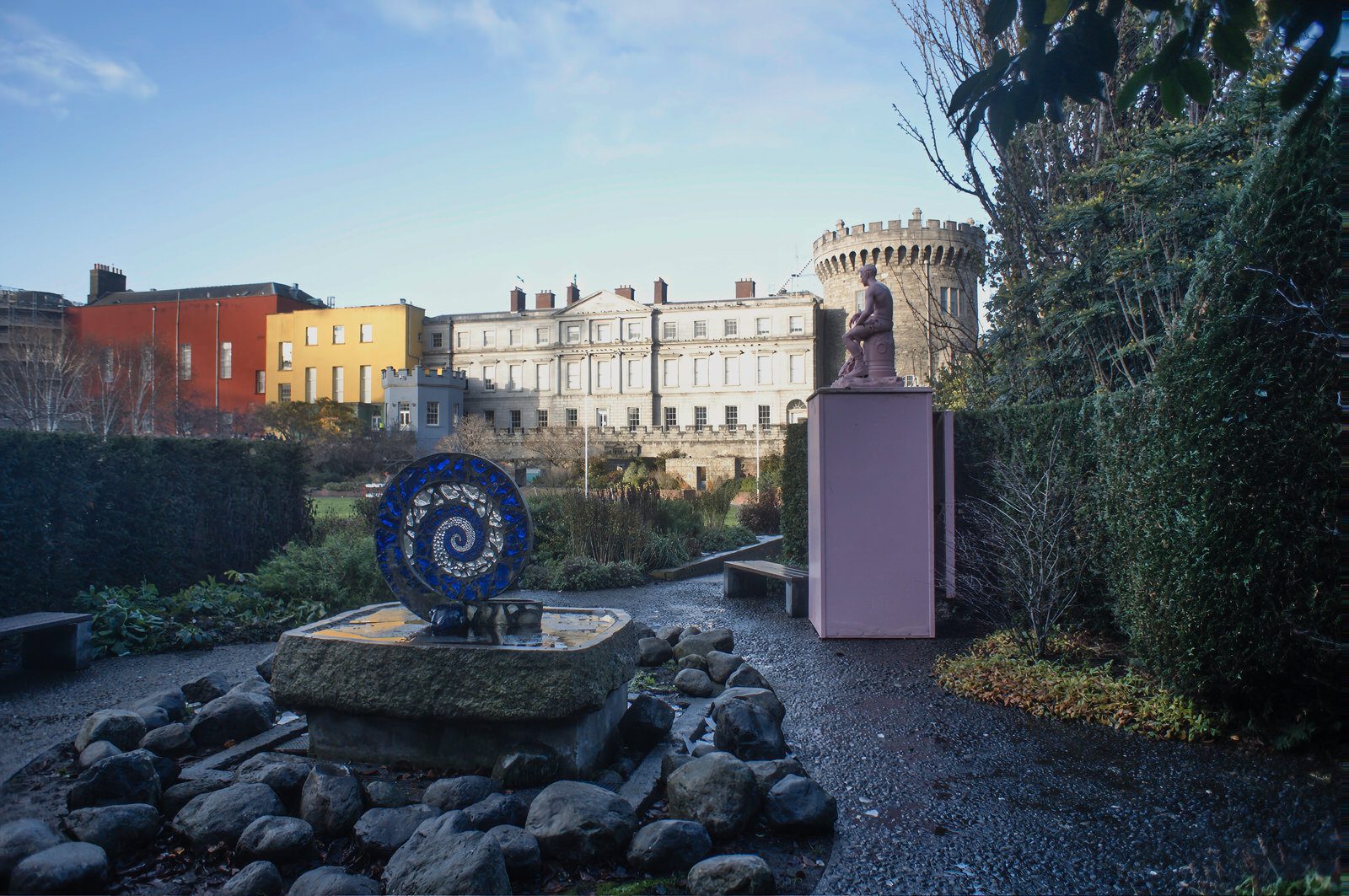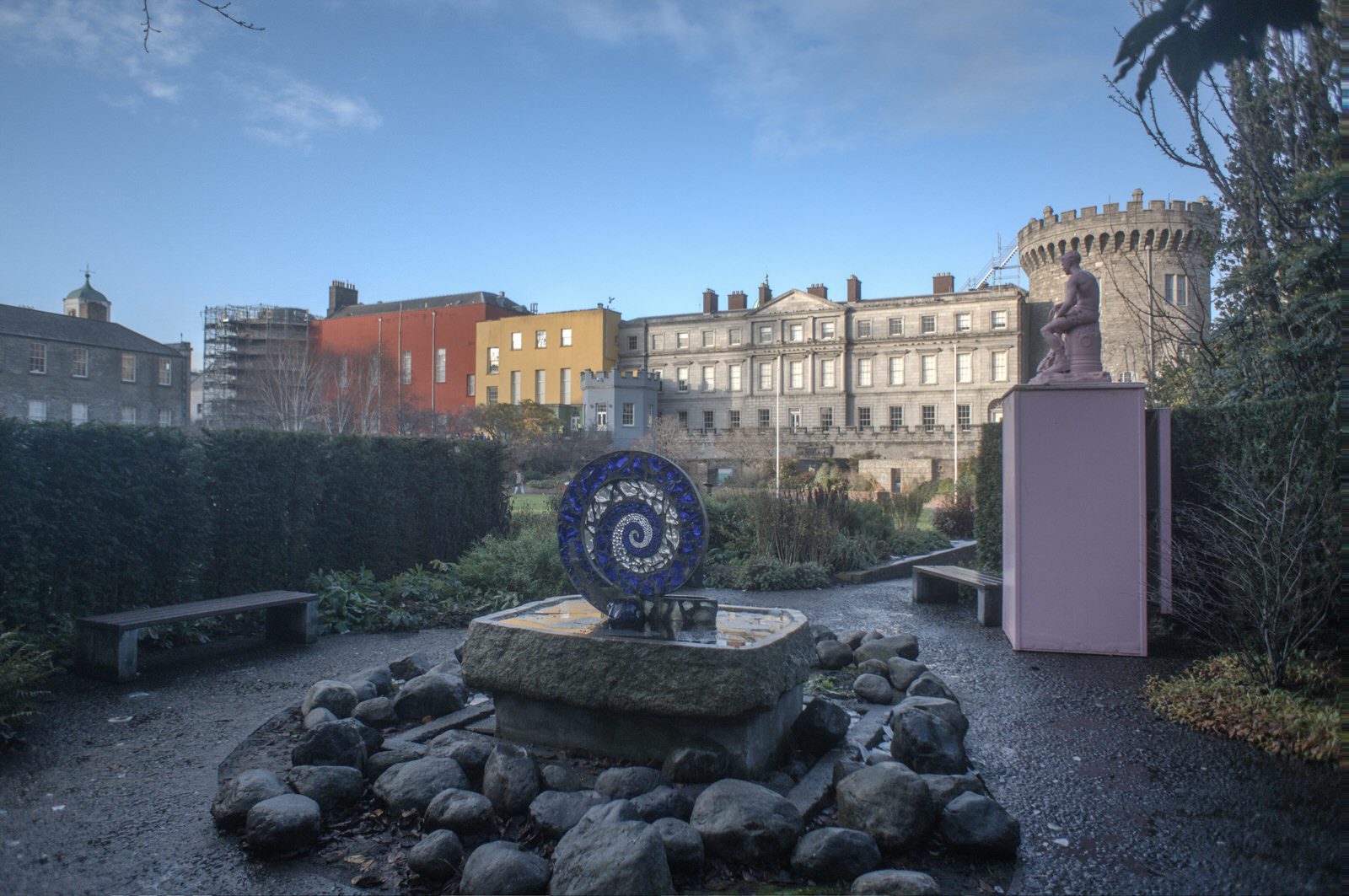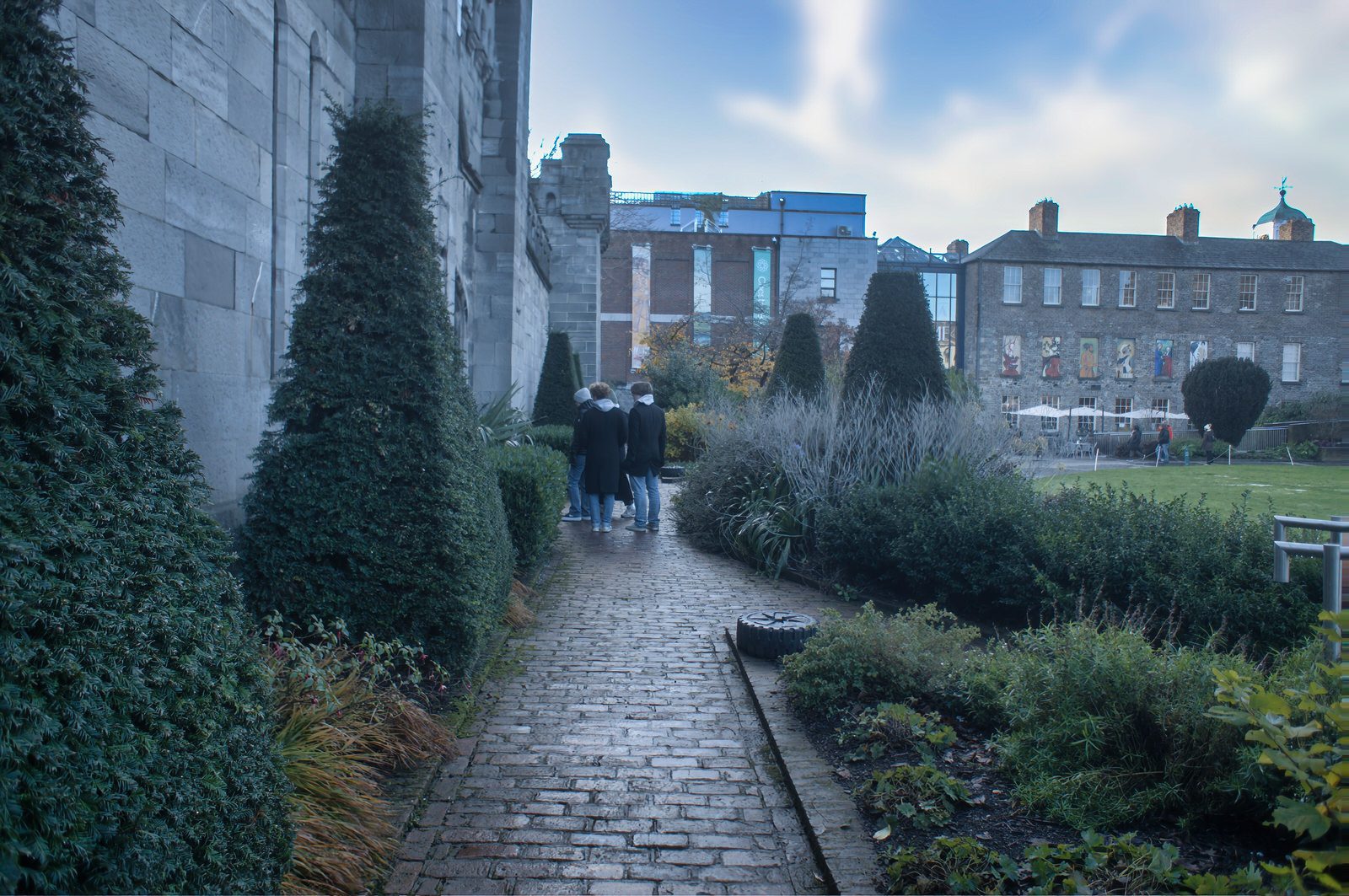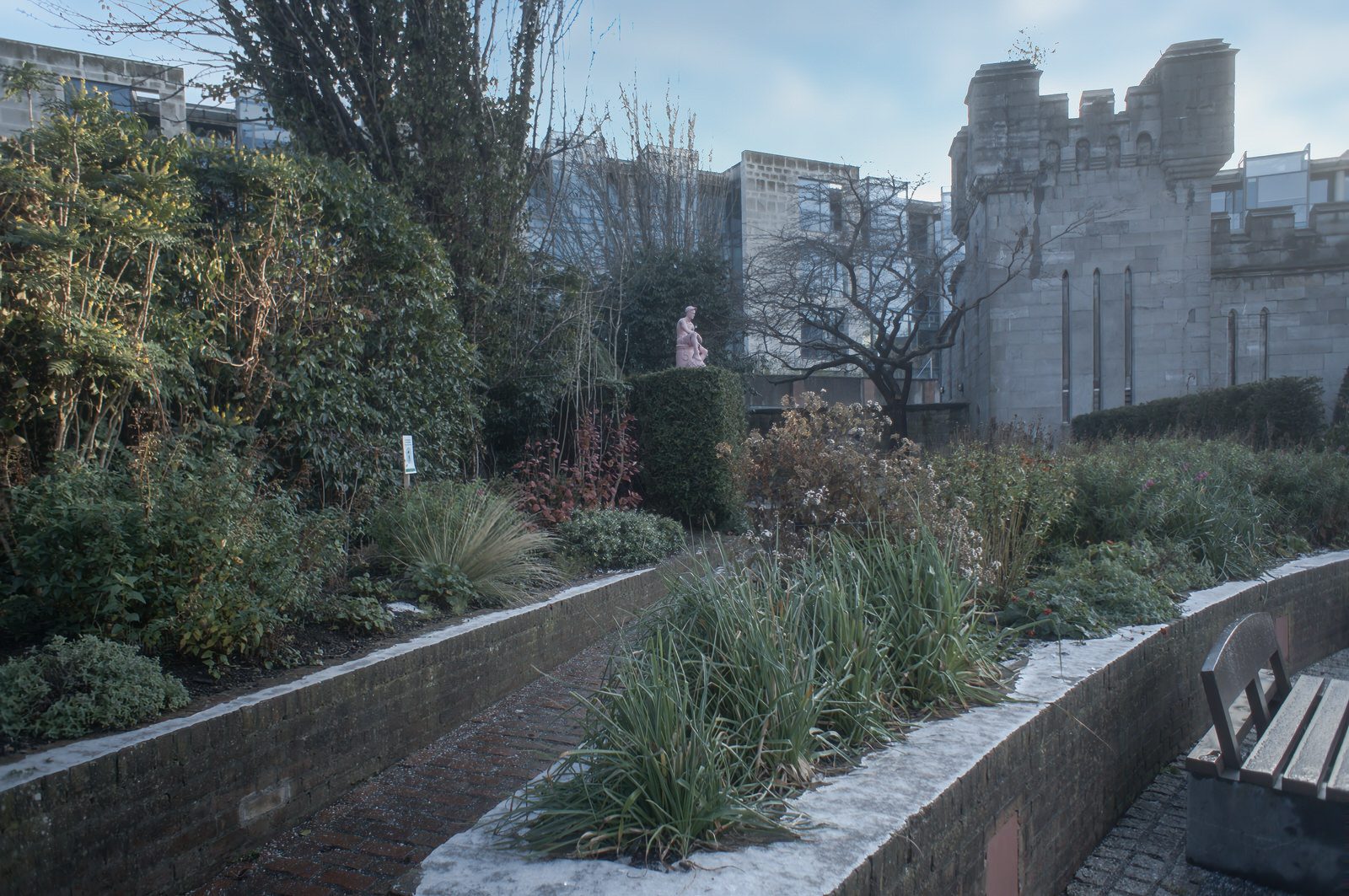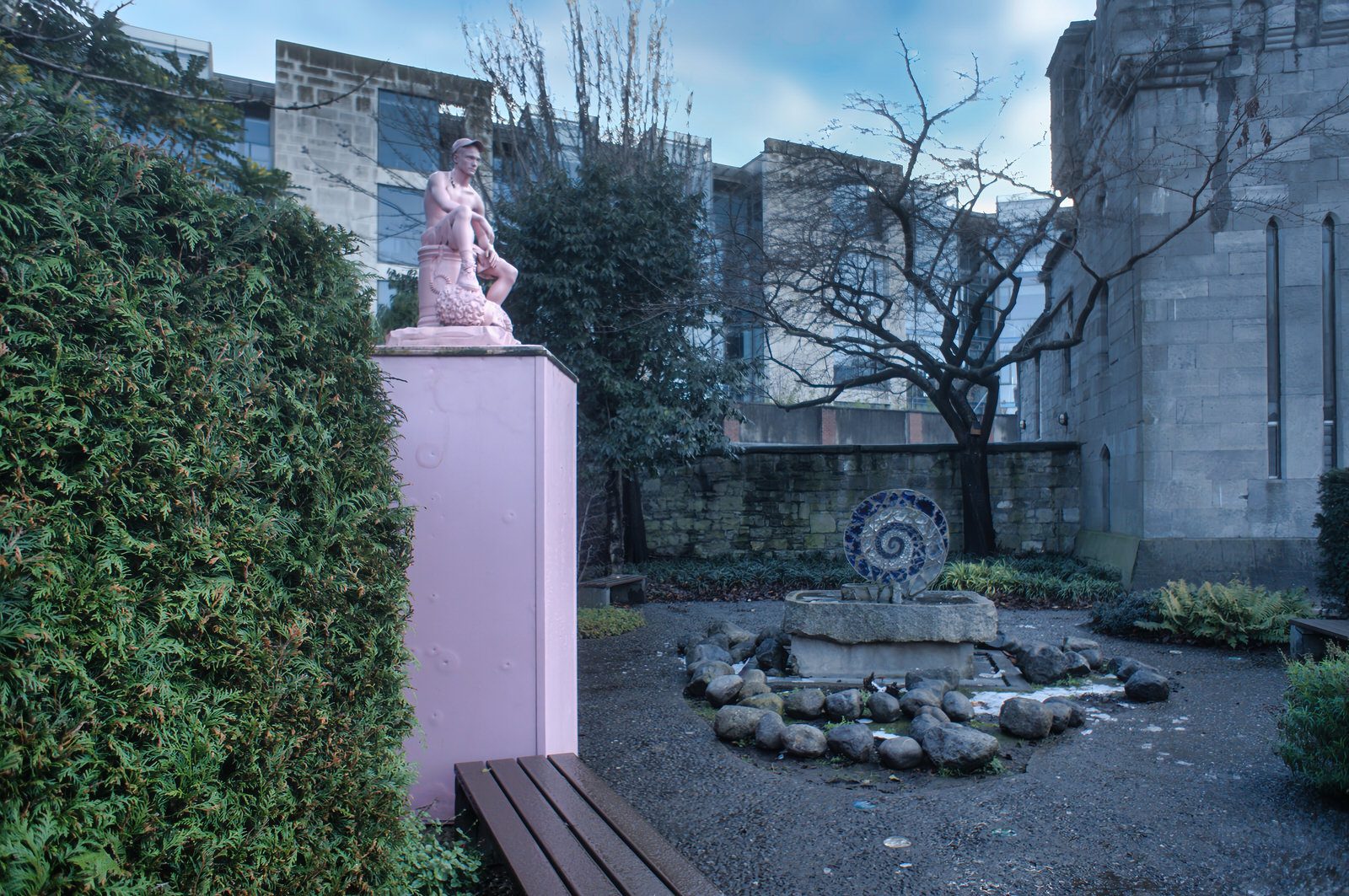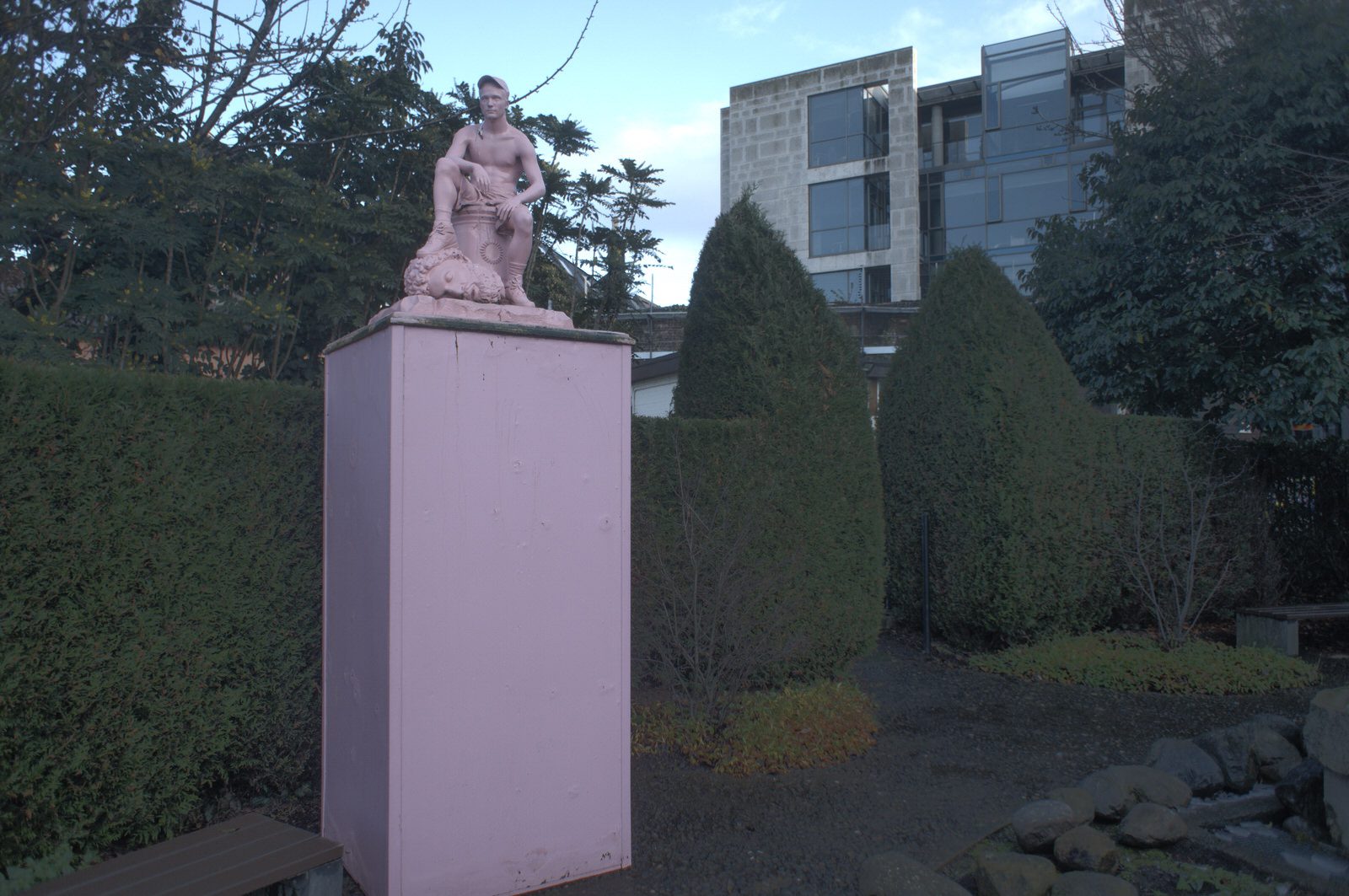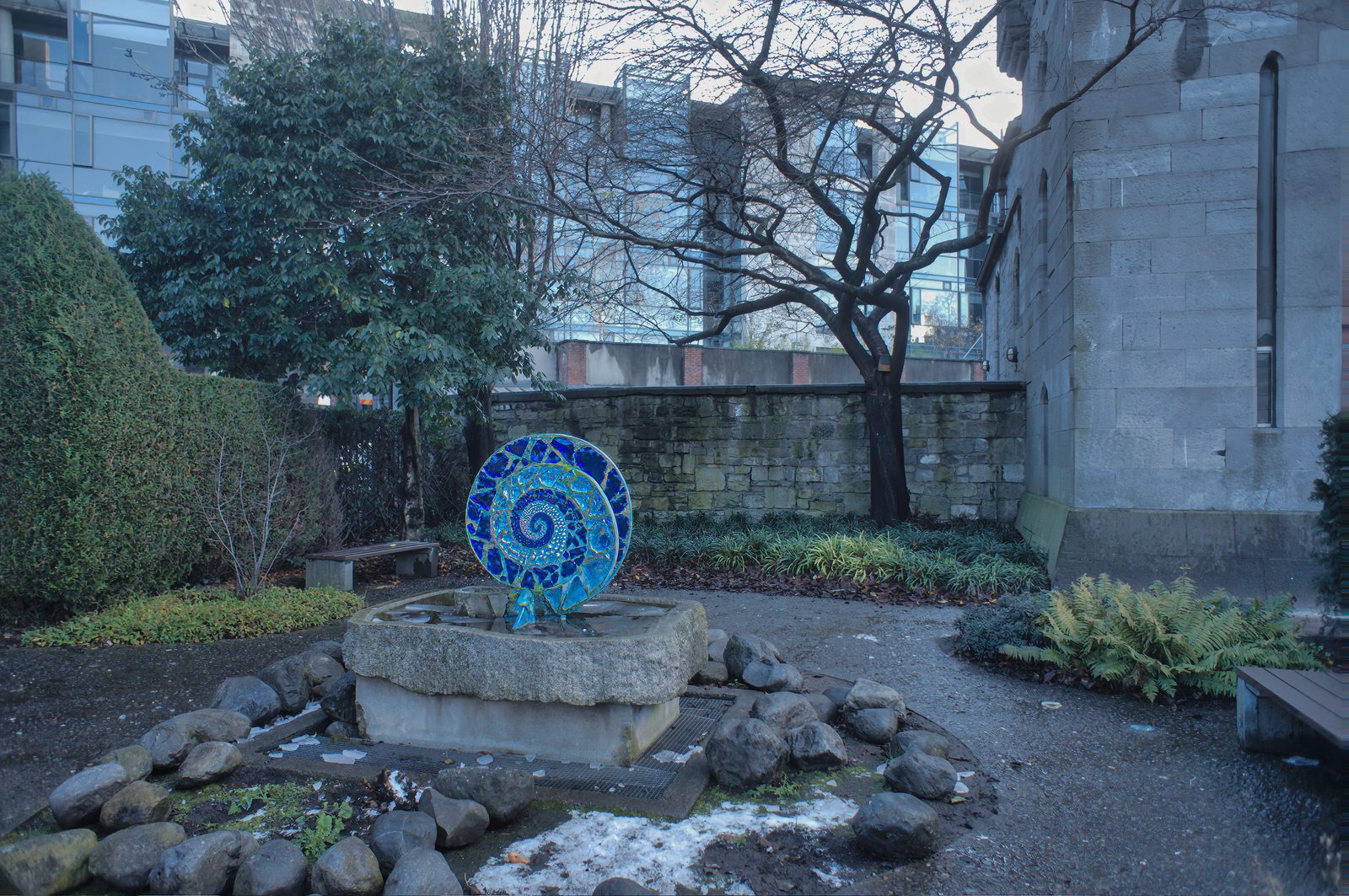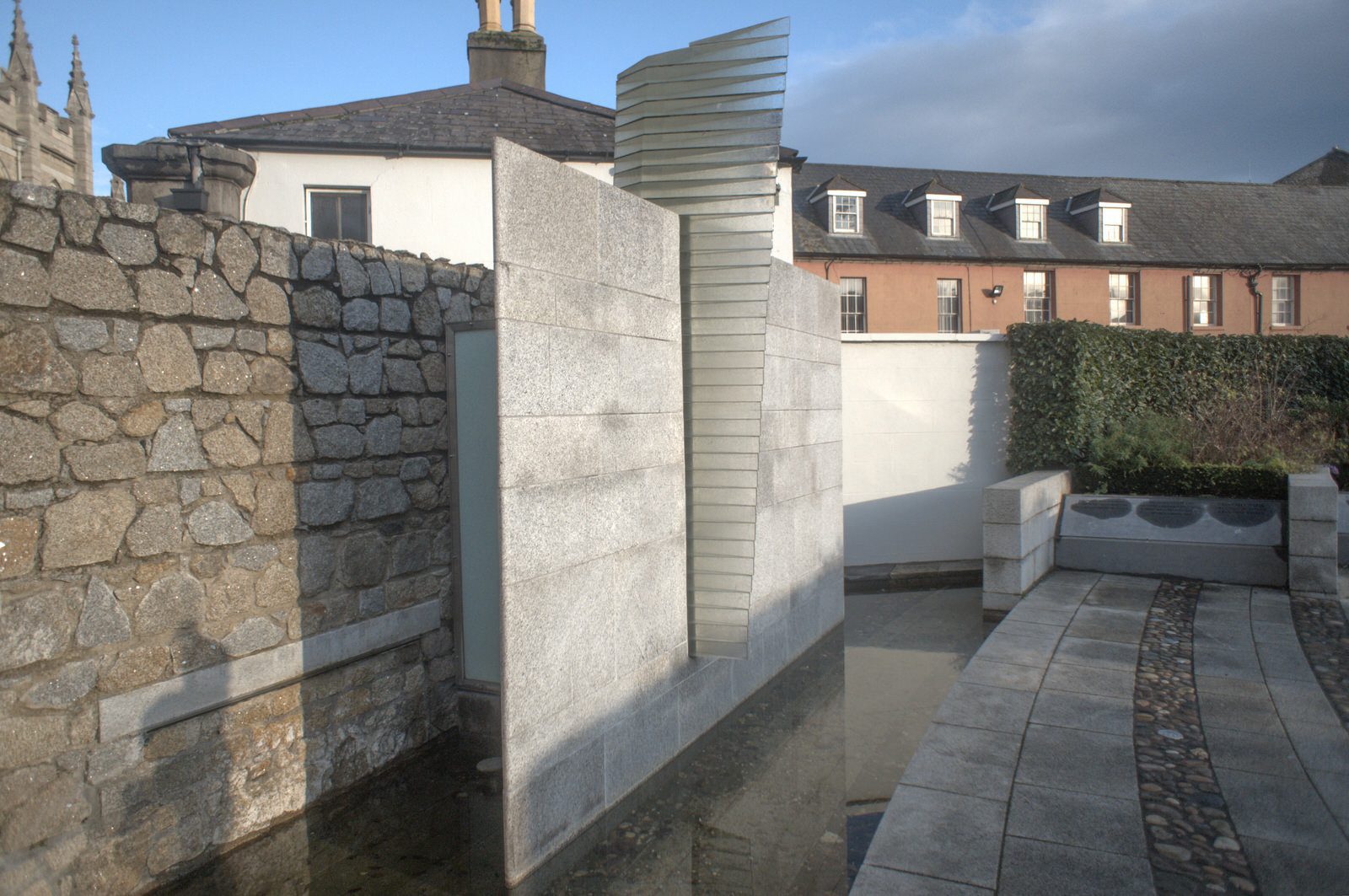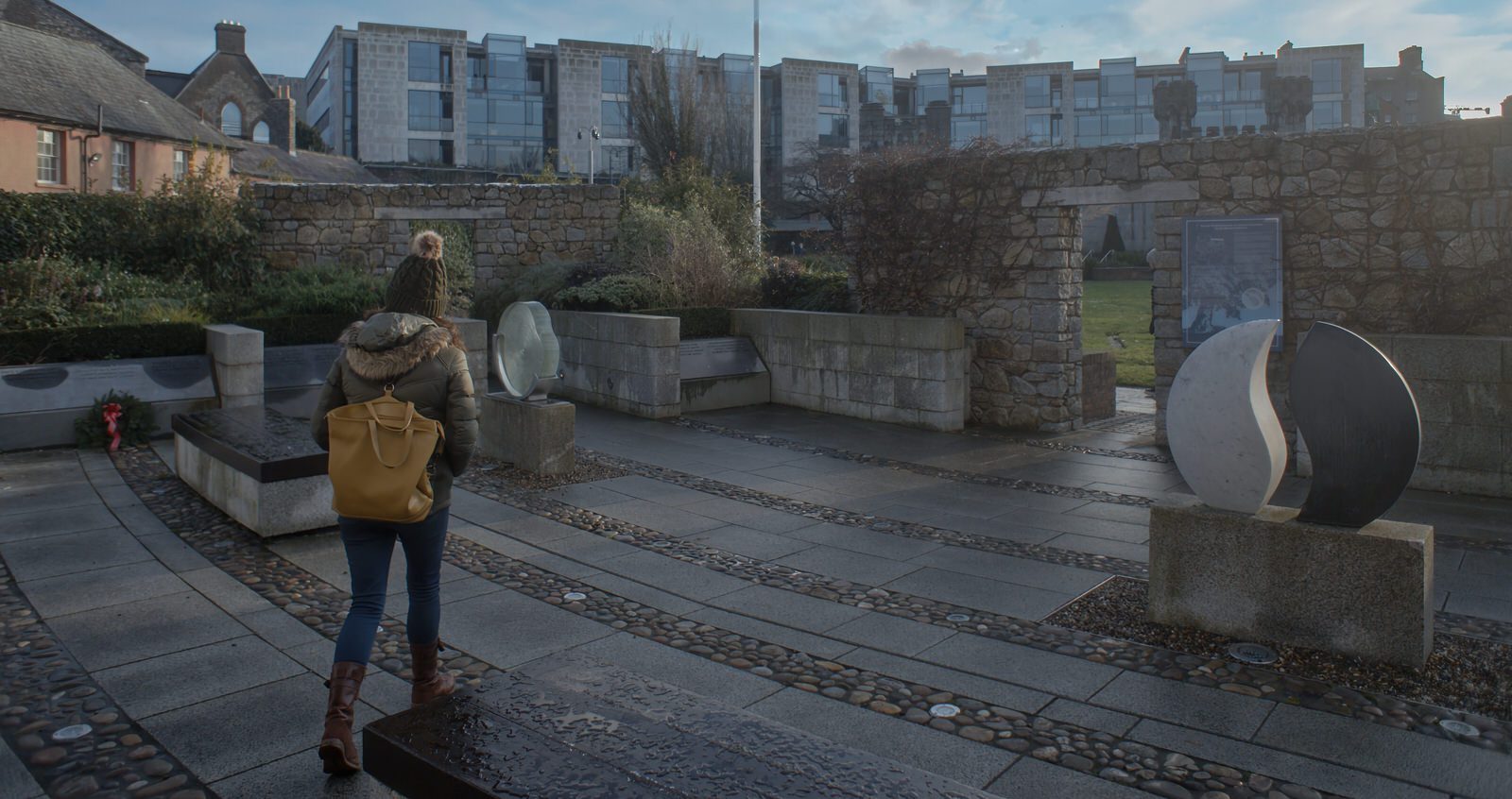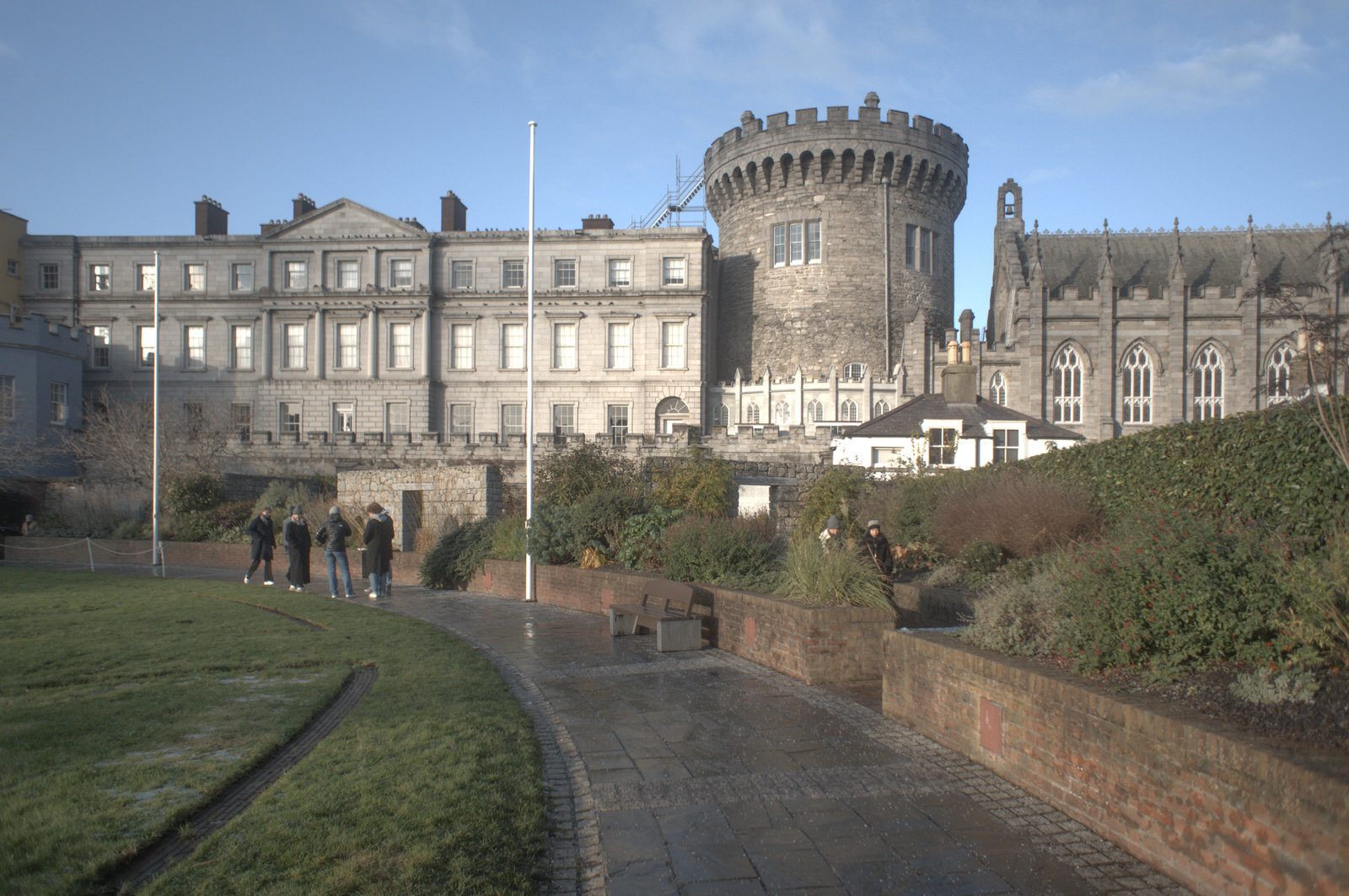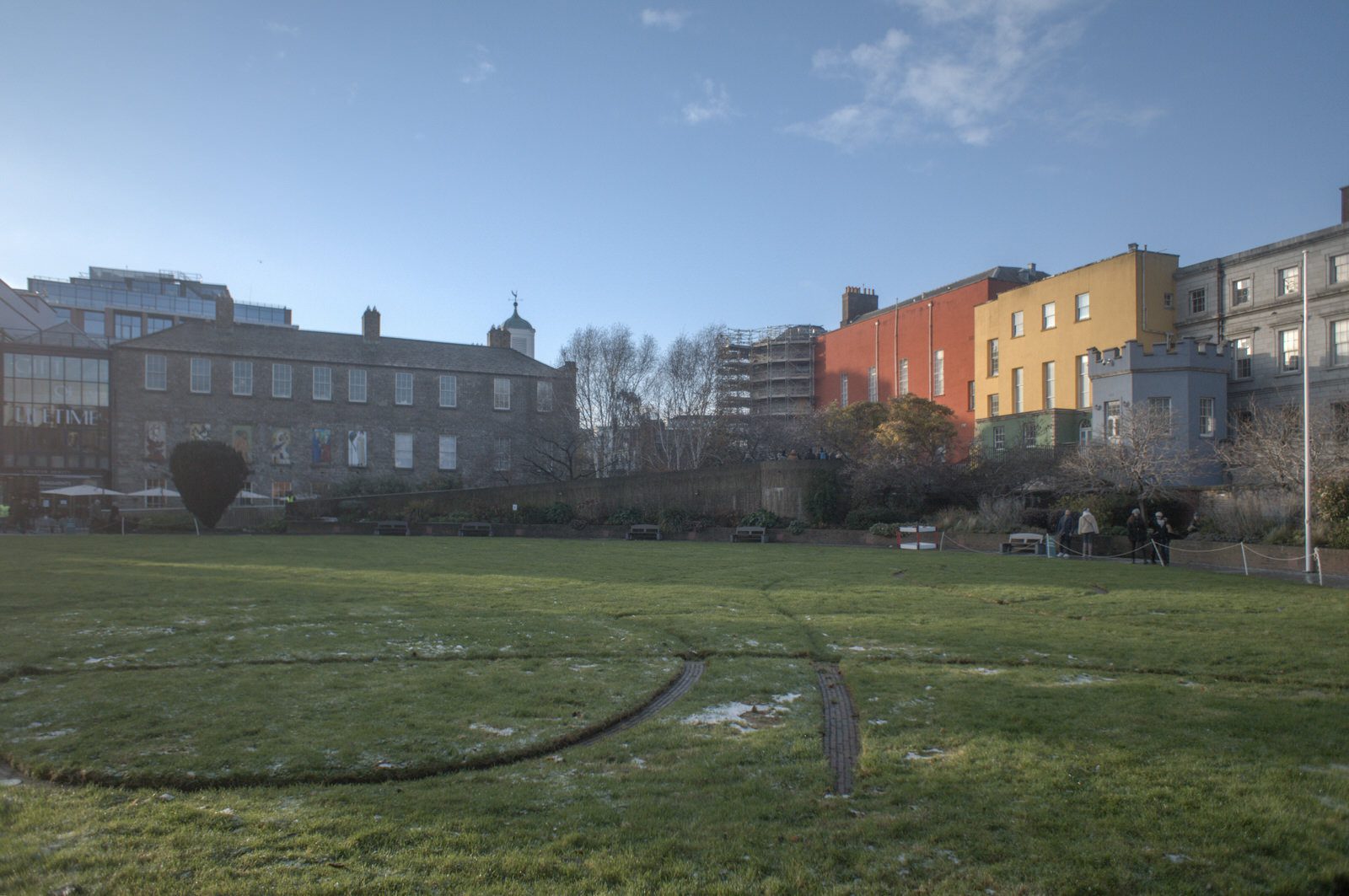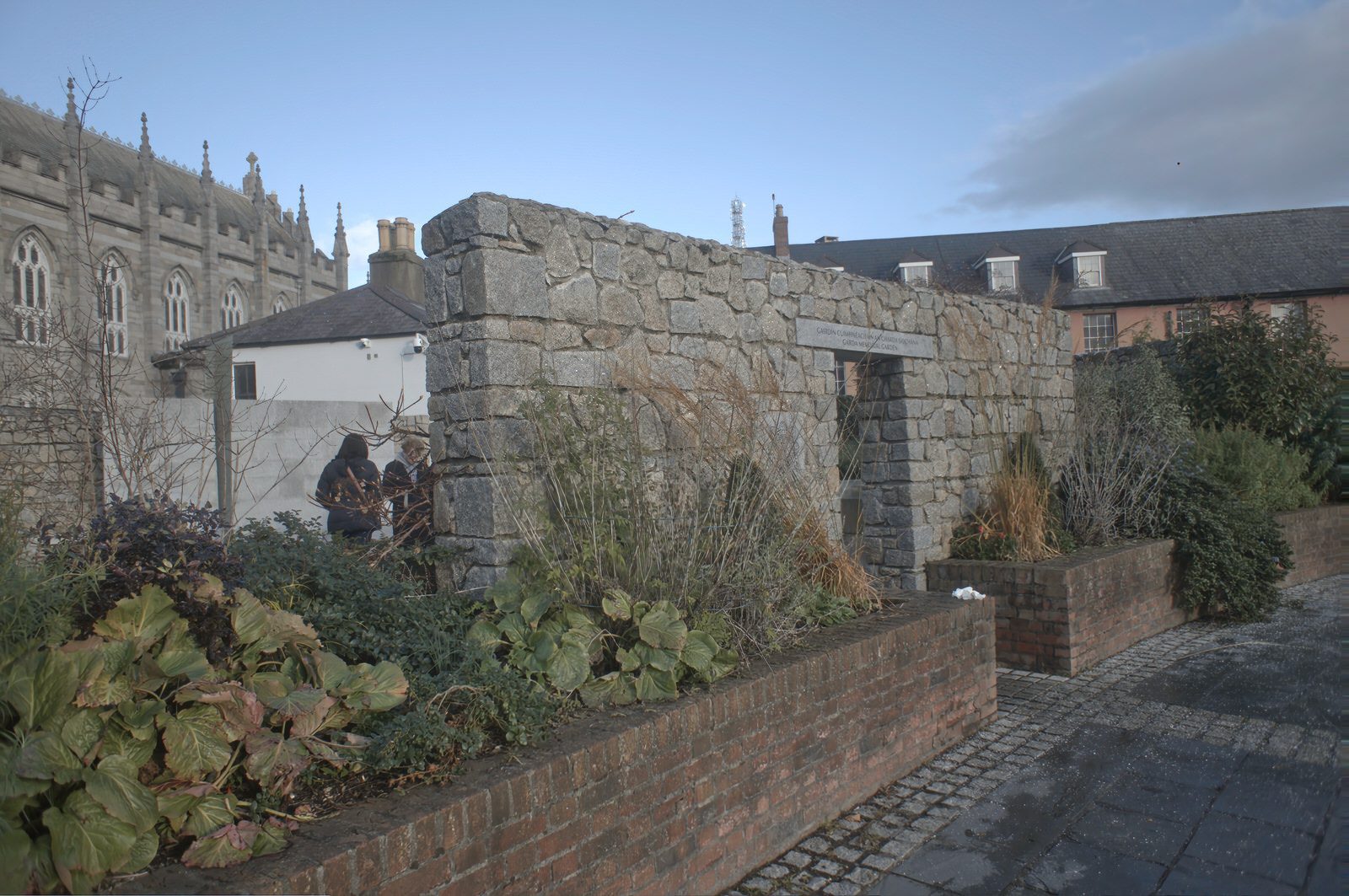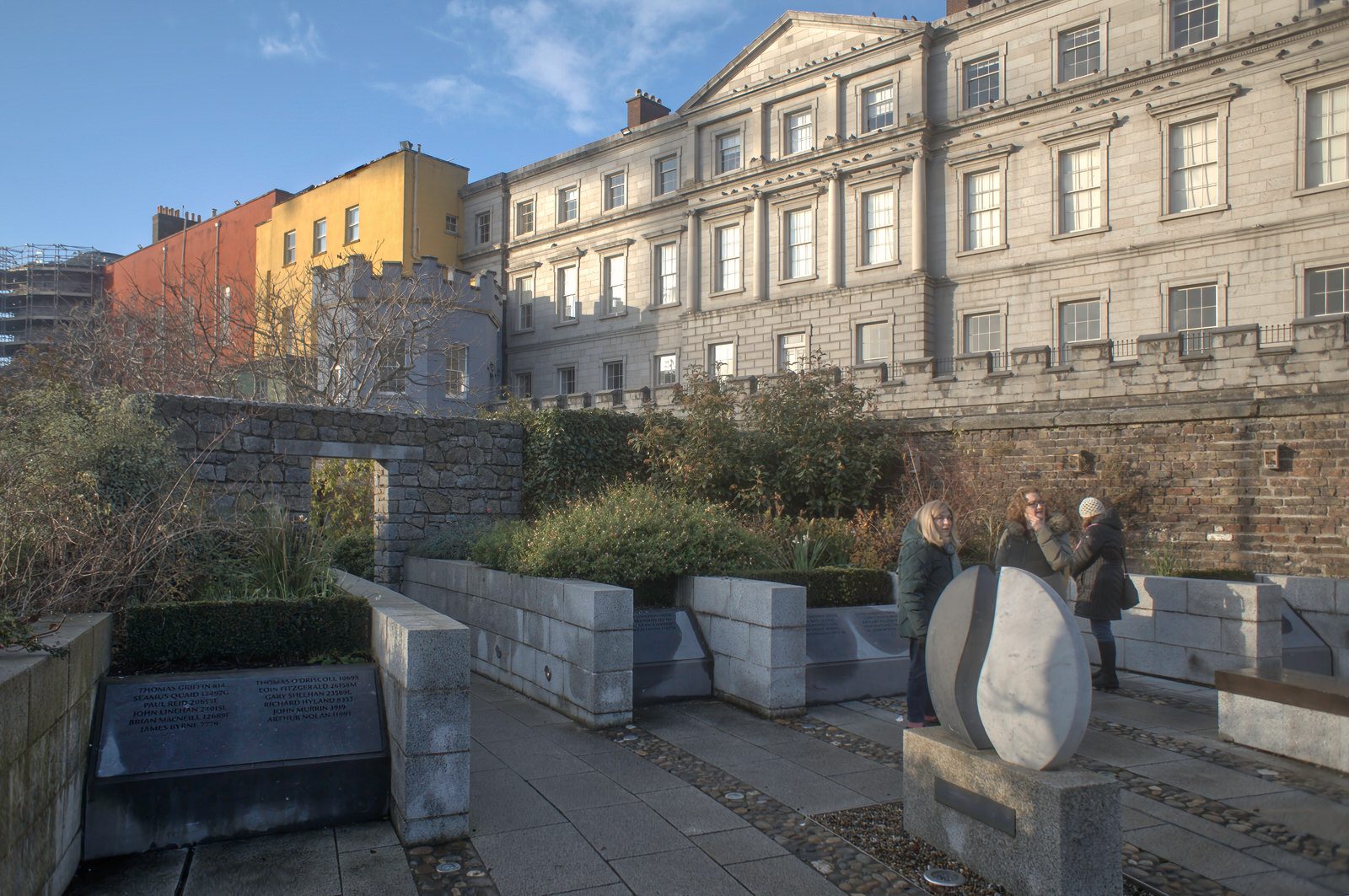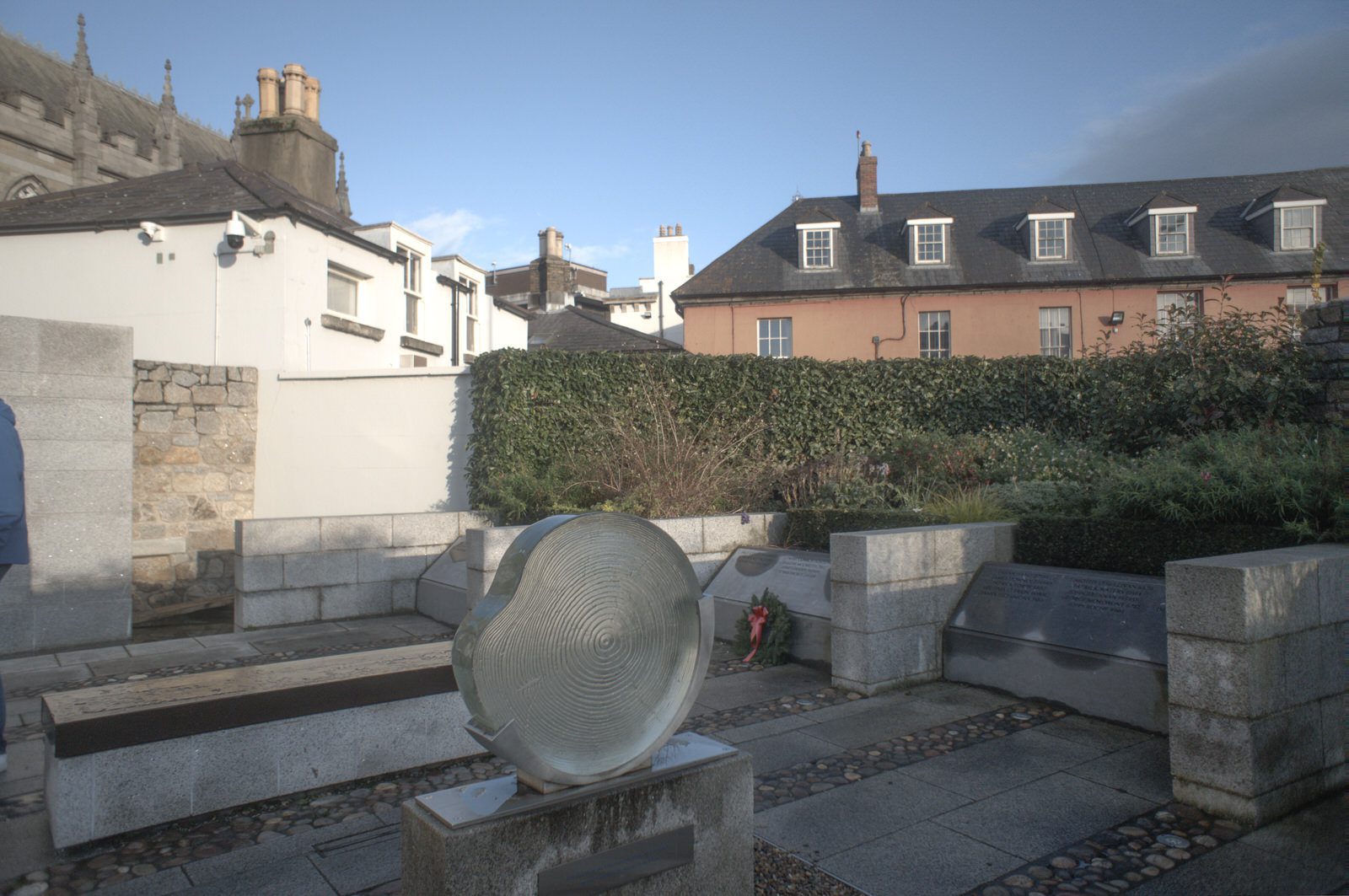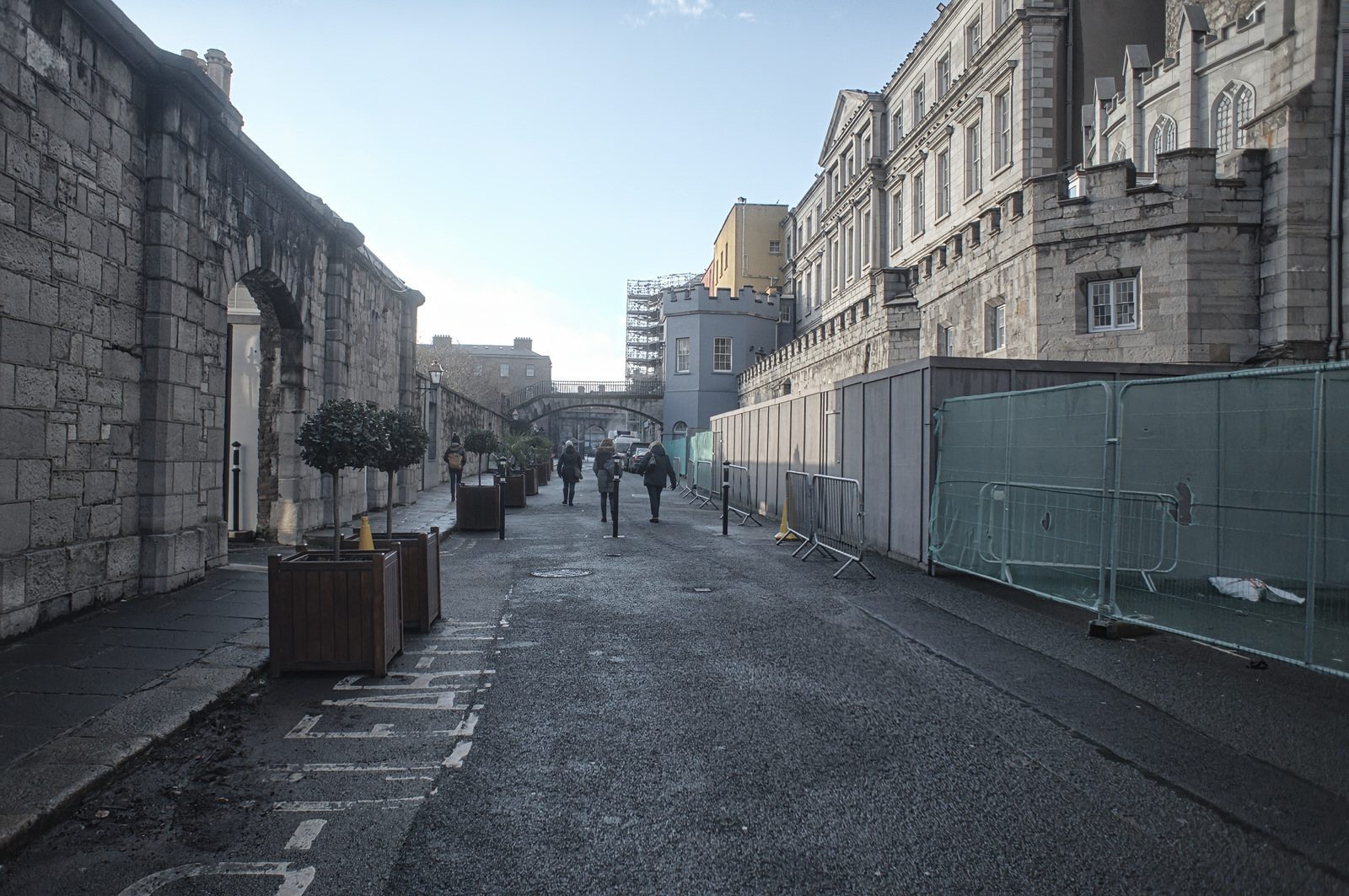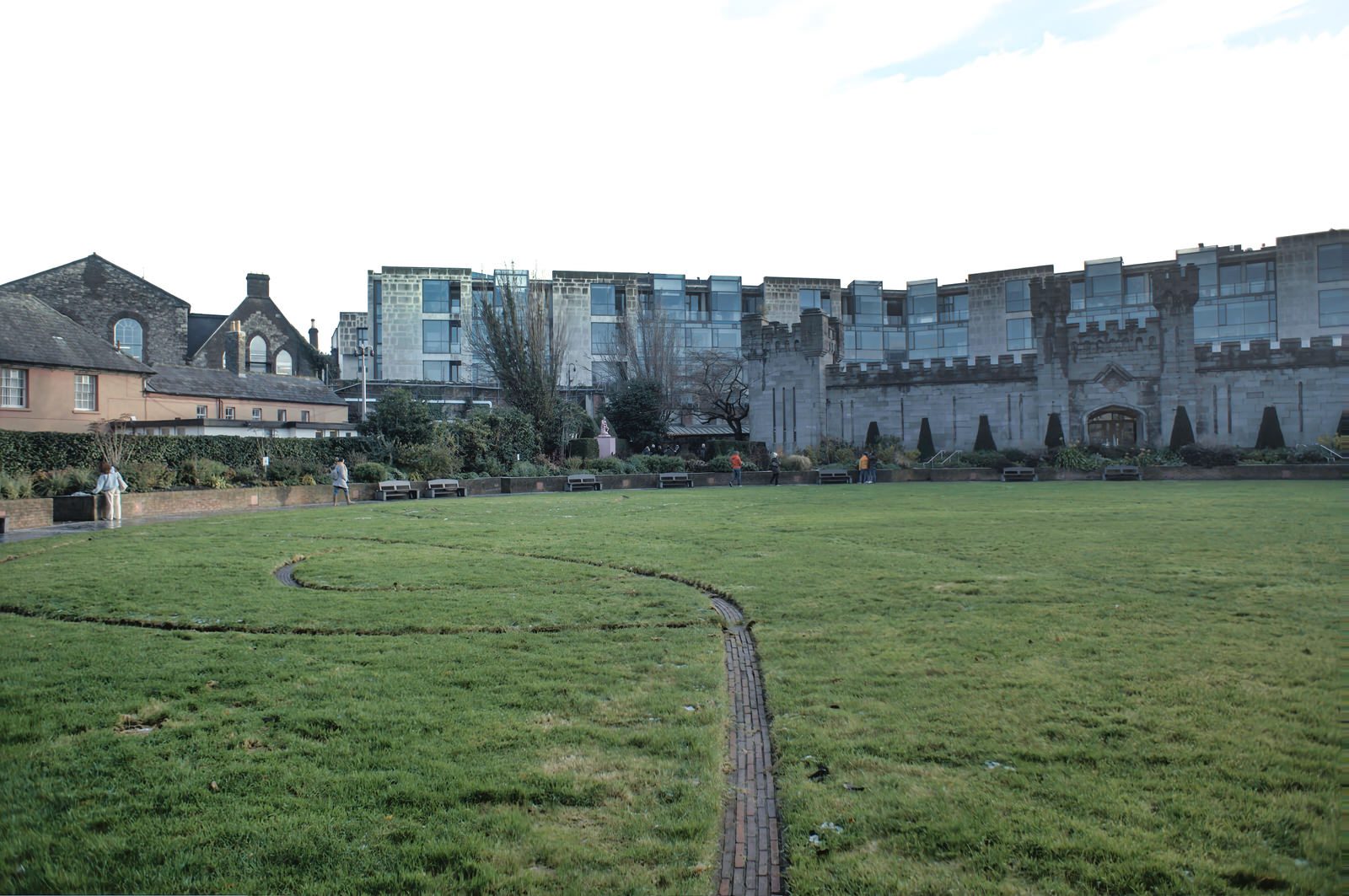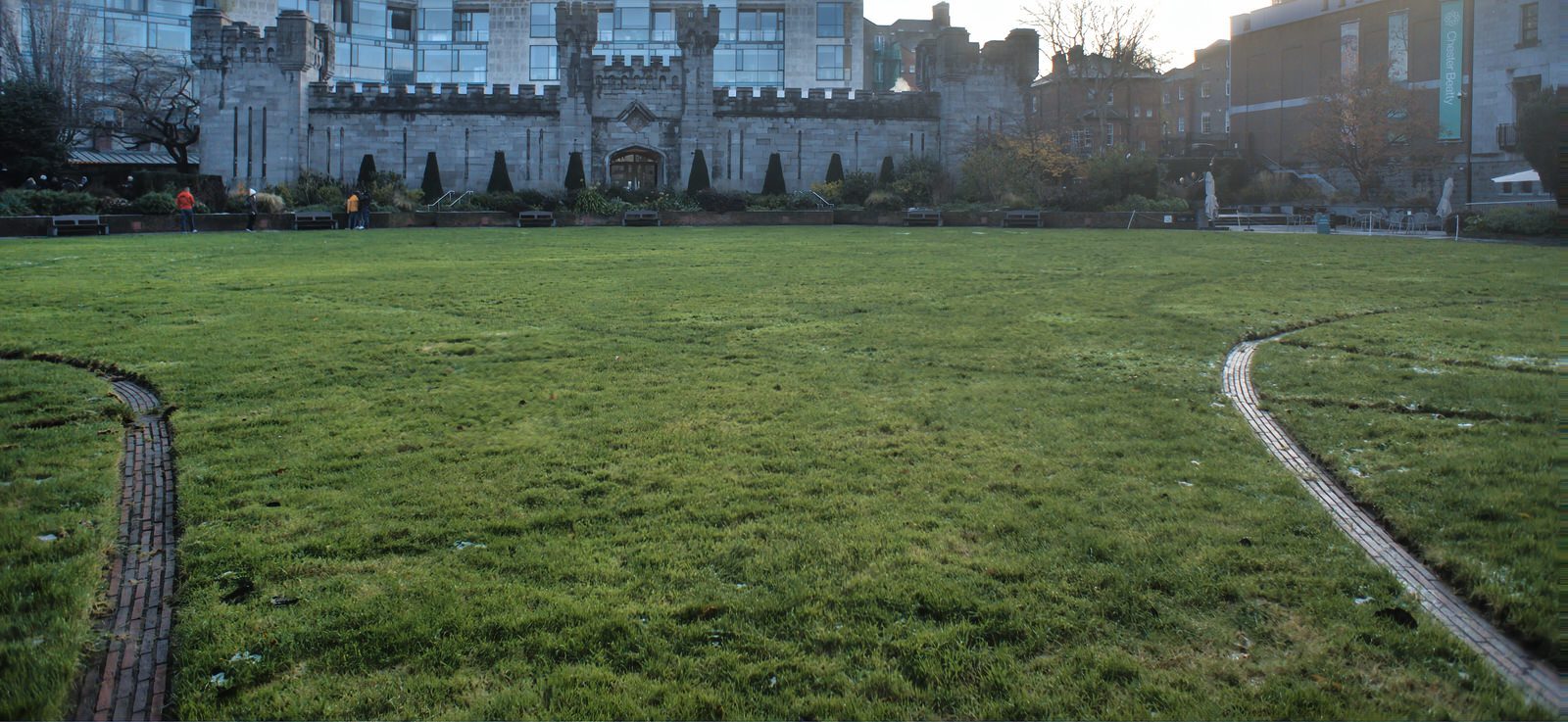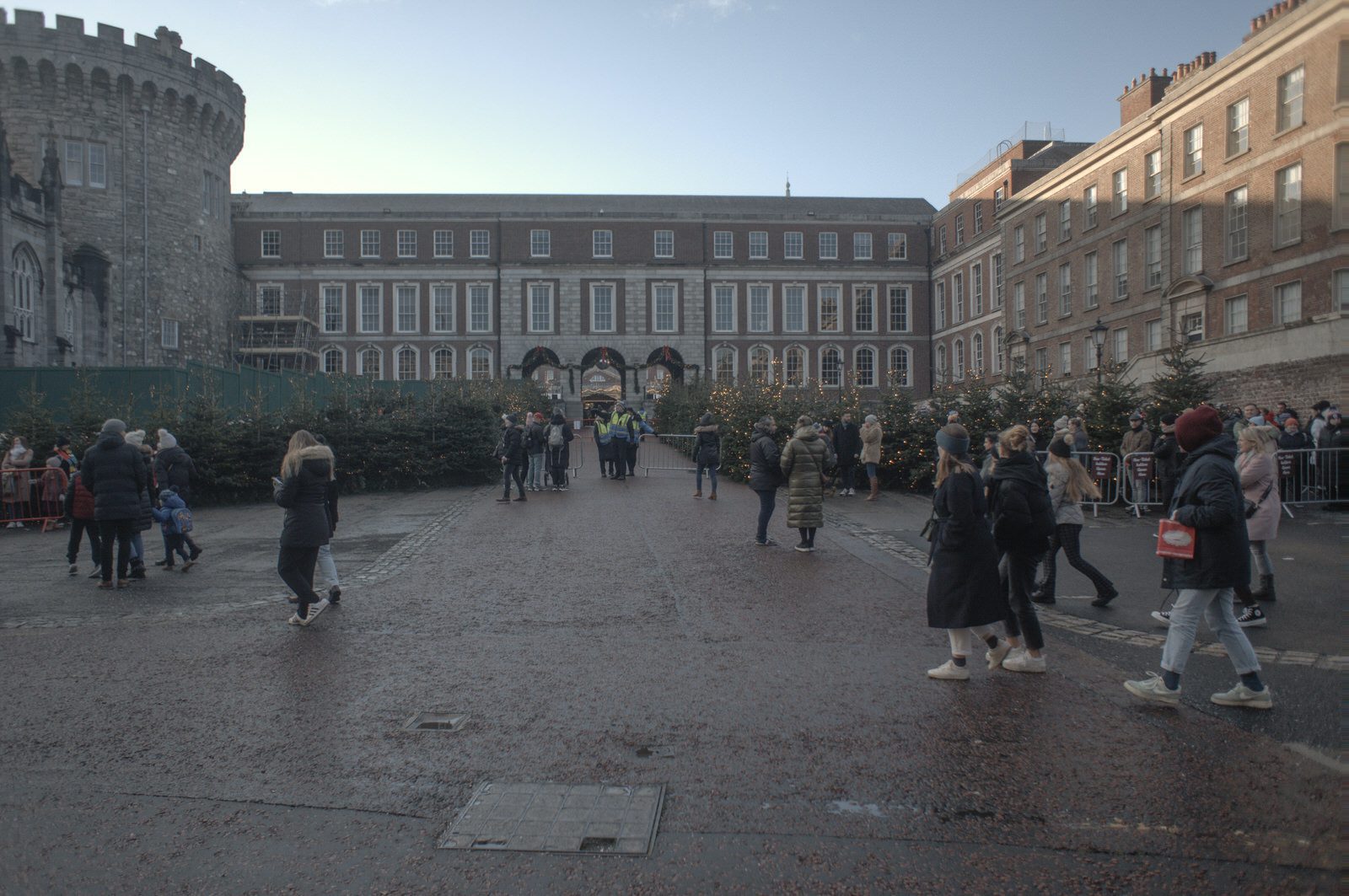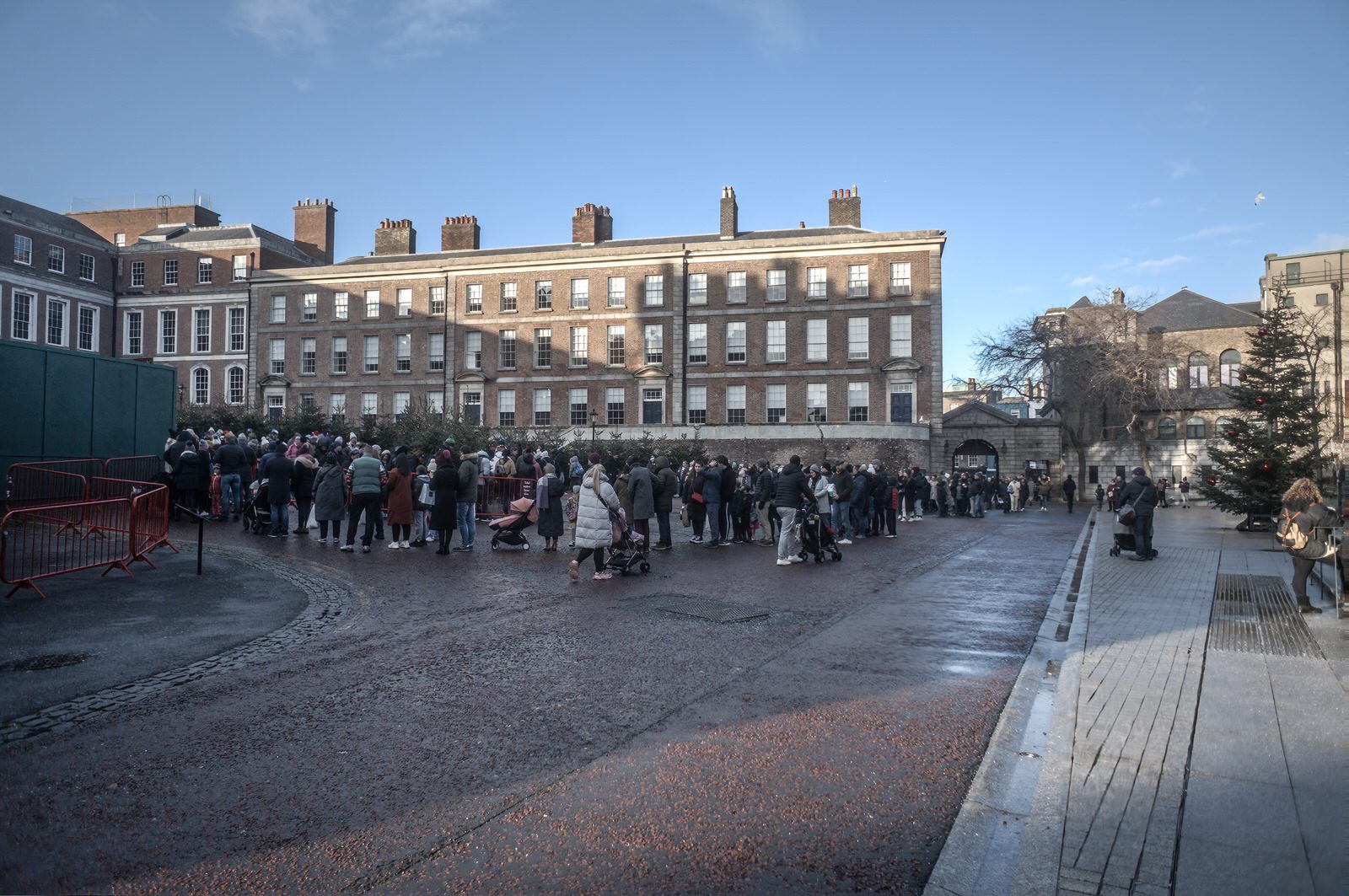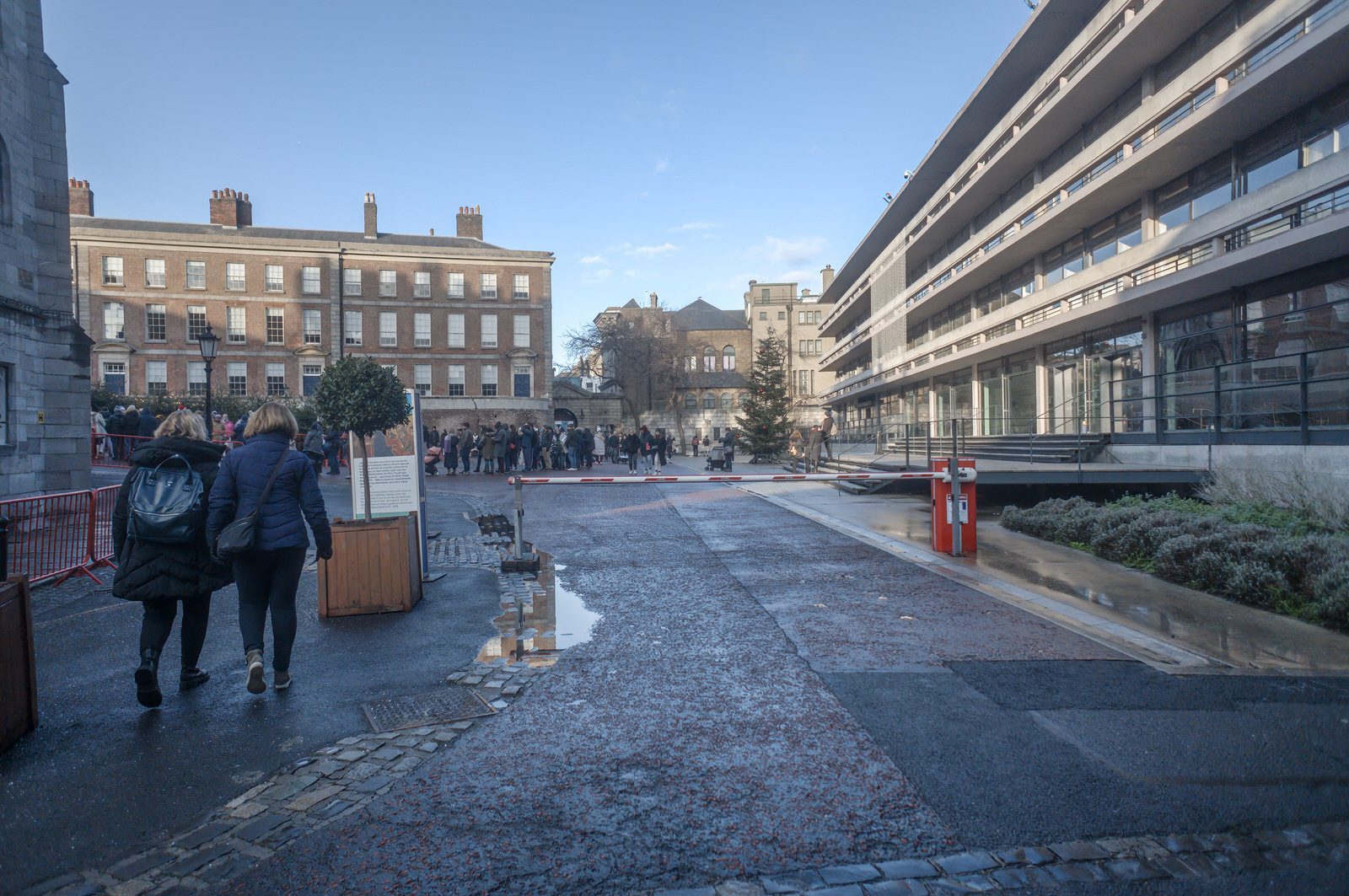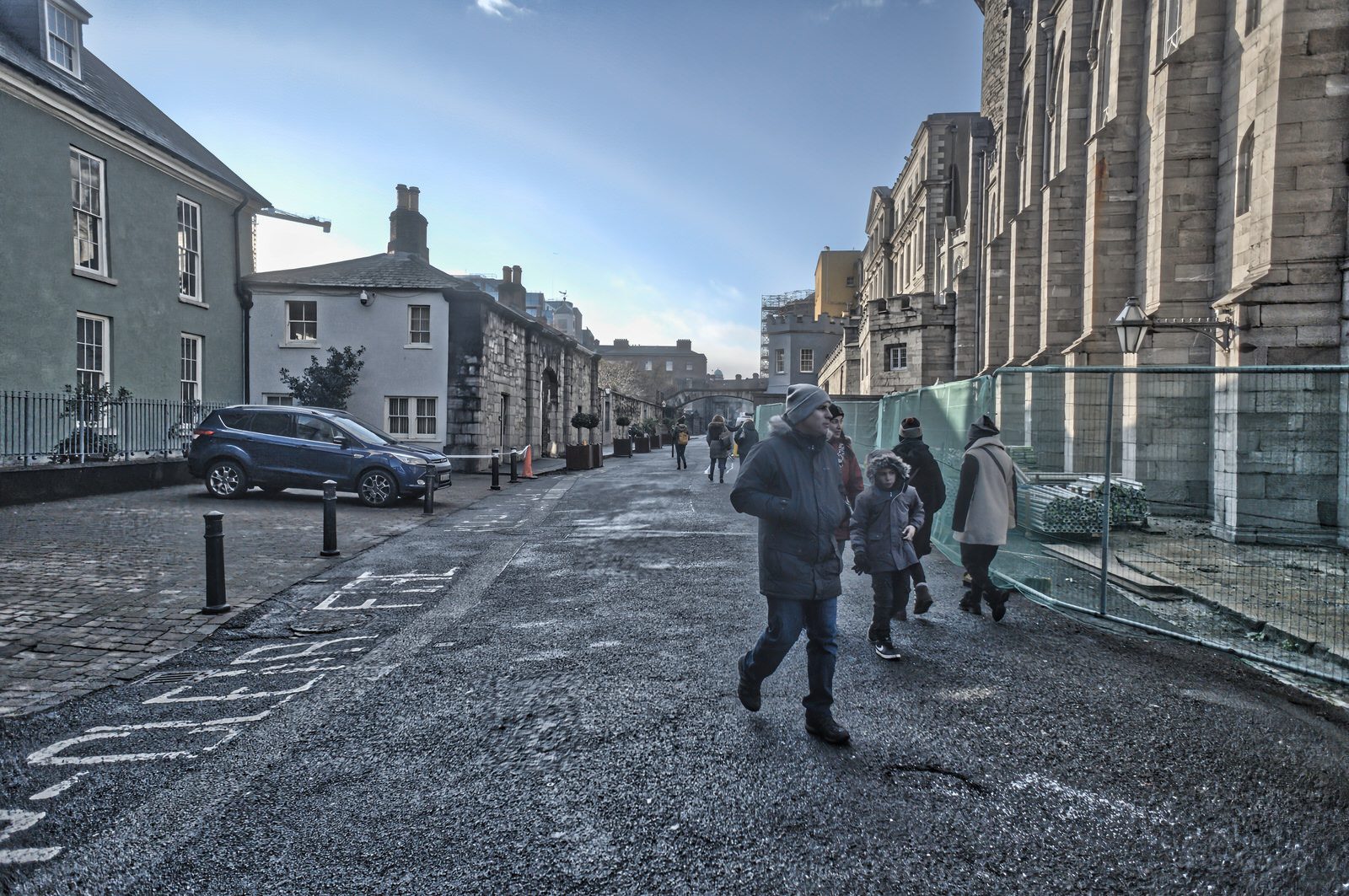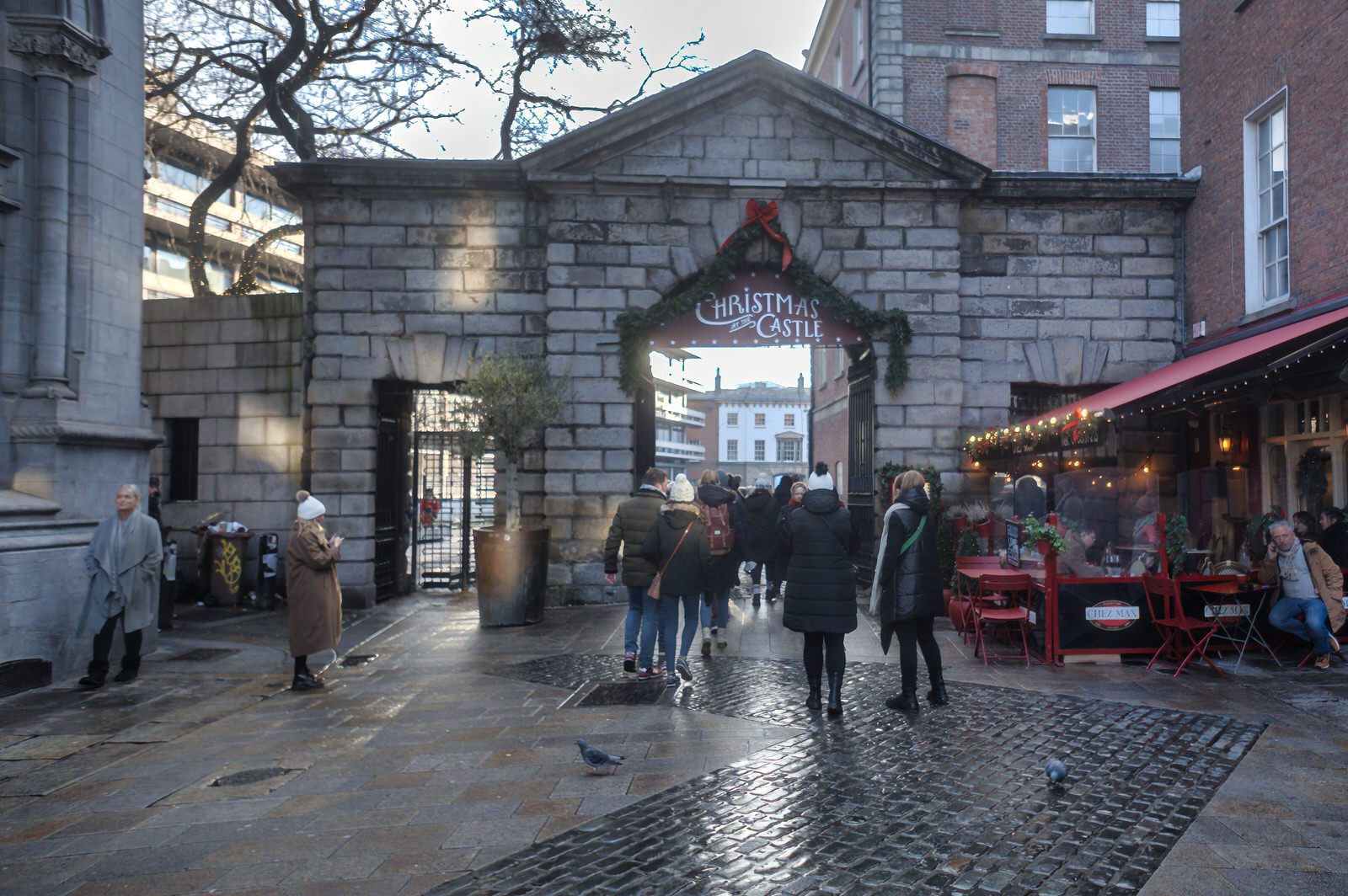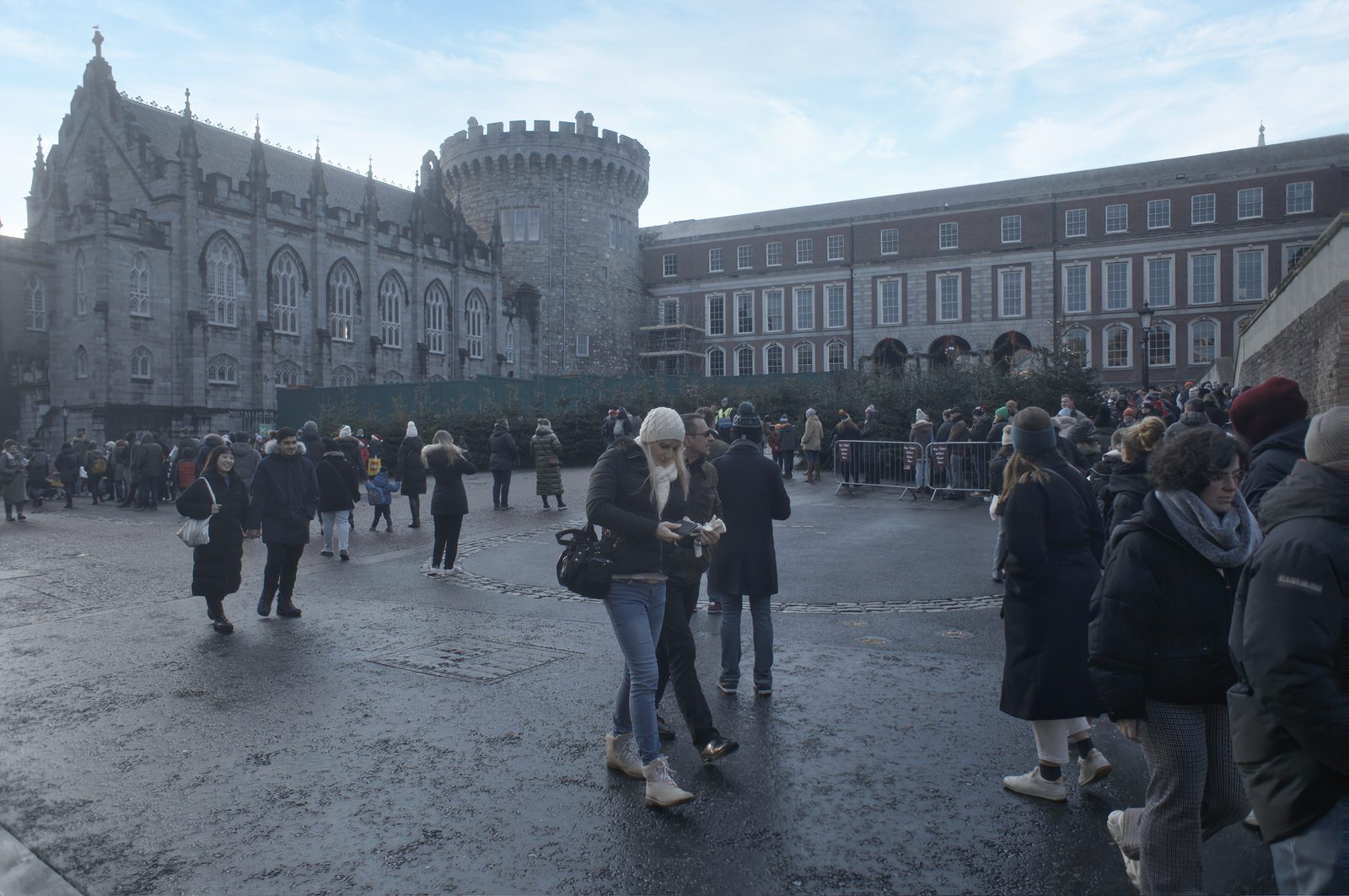NOT THE FREEDOM BELL AND NOT THE WELL KNOWN PUB
Vivienne Roche’s Liberty Bell and the Literary Parade were commissioned as part of the celebrations marking the Dublin ‘Millennium’ in 1988.
For a long time I had believed that this sculpture in St. Patrick’s park was named after the Liberty Bell which happens to be the iconic symbol of American independence but I was totally wrong.
It is known as ‘The Liberty Bell’ because it is located in an area of Dublin of Dublin known as “The Liberties”. For those of you who are not interested in visiting public parks or churches there is a nearby pub known as the Liberty Belle.
One of my followers, I do have a few, contacted me to draw my attention to the fact that the Liberty Bell is often confused with Dublin’s “freedom bell”, the first Catholic Church bell to ring in Dublin in breach of the Penal Laws 200 years ago.
Legend has it that The Liberator Daniel O’Connell rang the bell to celebrate emancipation in 1829, creating the crack in the bell which remains visible today. “This is Dublin’s, and Ireland’s, great freedom bell,” Smock Alley director Patrick Sutton said in an interview with the Irish Times. “In America the Liberty Bell is cased behind eight inches of plate glass, our bell was cased beneath eight inches of pigeon poop.”
The Liberties of Dublin, Ireland were manorial jurisdictions that existed since the arrival of the Anglo-Normans in the 12th century. They were town lands united to the city, but still preserving their own jurisdiction. The most important of these liberties were the Liberty of St. Sepulchre, under the Archbishop of Dublin, and the Liberty of Thomas Court and Donore belonging to the Abbey of St. Thomas (later called the Earl of Meath’s Liberty).Today’s “Dublin Liberties” generally refer to the inner-city area covered by these two liberties.
Born in Cork in 1953, daughter of an engineer, Vivienne Roche was educated in Miss O’Sullivan’s primary and secondary school before studying first at the Crawford School of Art from 1970 to 1974 and then the School of the Museum of Fine Arts in Boston graduating in 1975. She was awarded an honorary doctorate by University College Cork in 2006.
She began her creative life as an artist but moved into sculptor and is considered one of Ireland’s foremost sculptors. Roche was one of the founders of the National Sculpture Factory in Cork and was the chair from 1989 to 1997. She also was on the national Arts Council from 1993 to -1998 as well as on the governing body of Cork Institute of Technology. She is a member of Aosdána and the Royal Hibernian Academy. She is on the board of the Hugh Lane Gallery and the Dublin City Gallery. Roche remains active in creating national cultural policy.
Roche has participated in exhibitions in multiple countries like France, Finland, Sweden, England, and the U.S. Her work has been presented by the President of Ireland to other national heads of state. She lives in County Cork.
